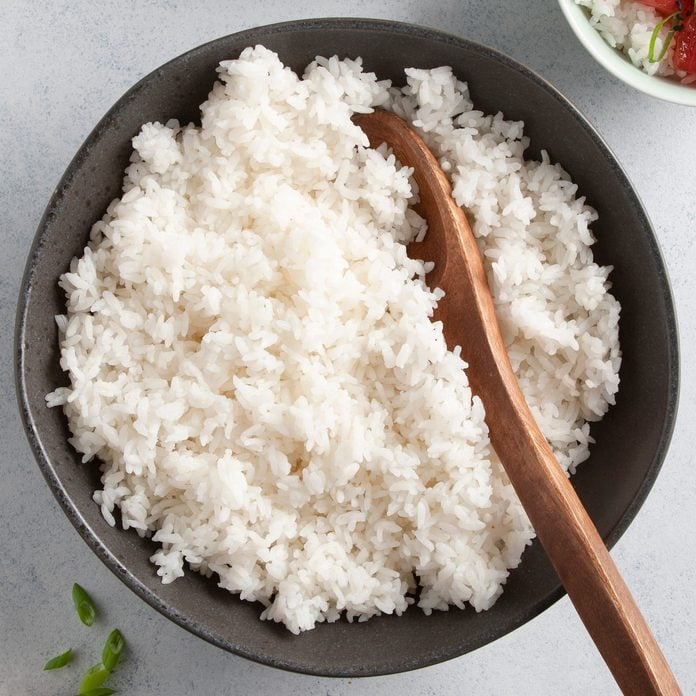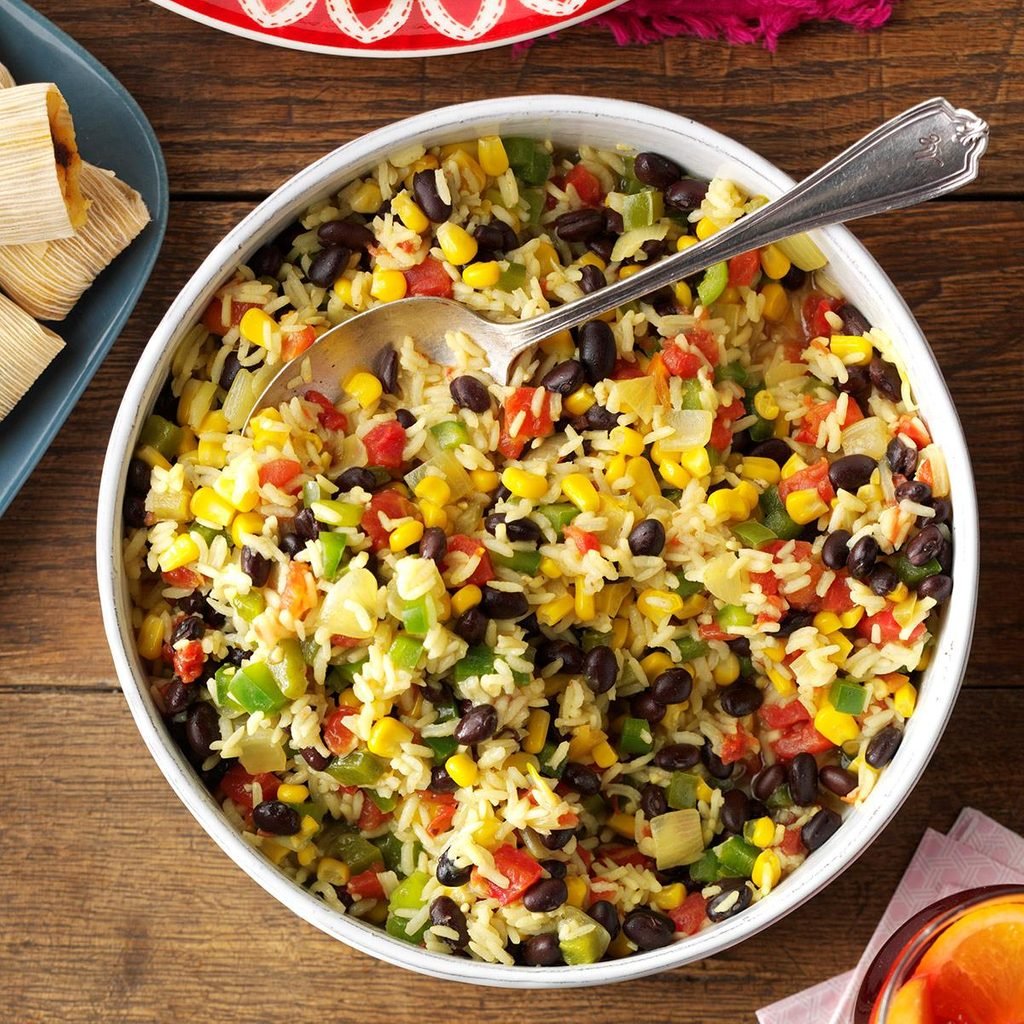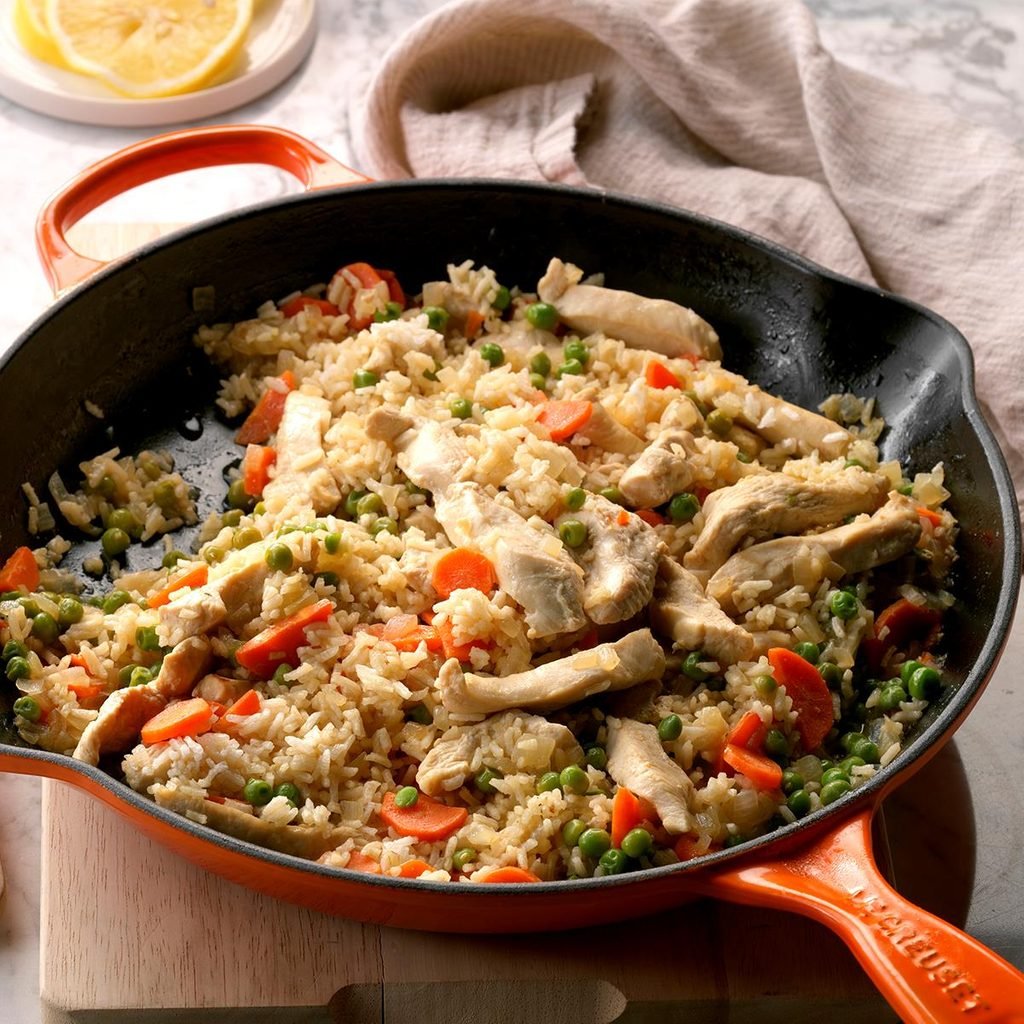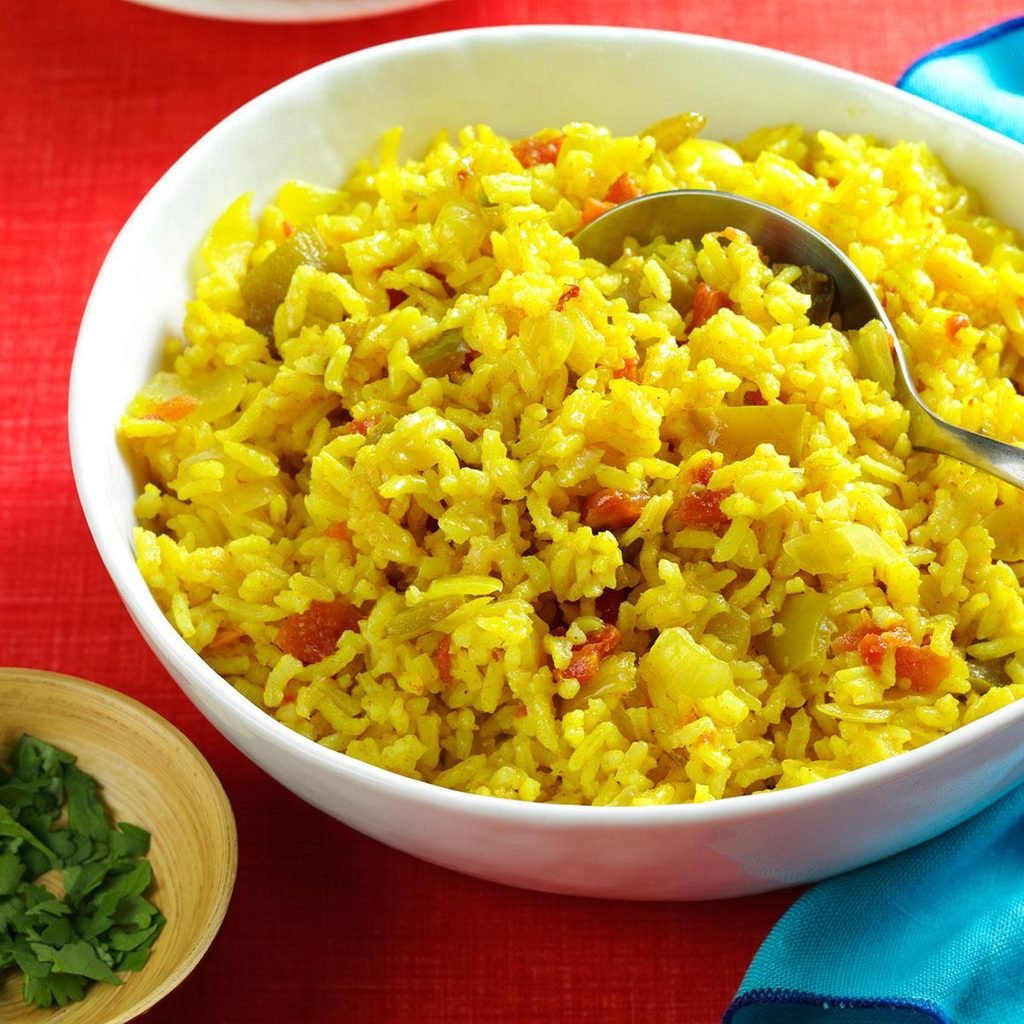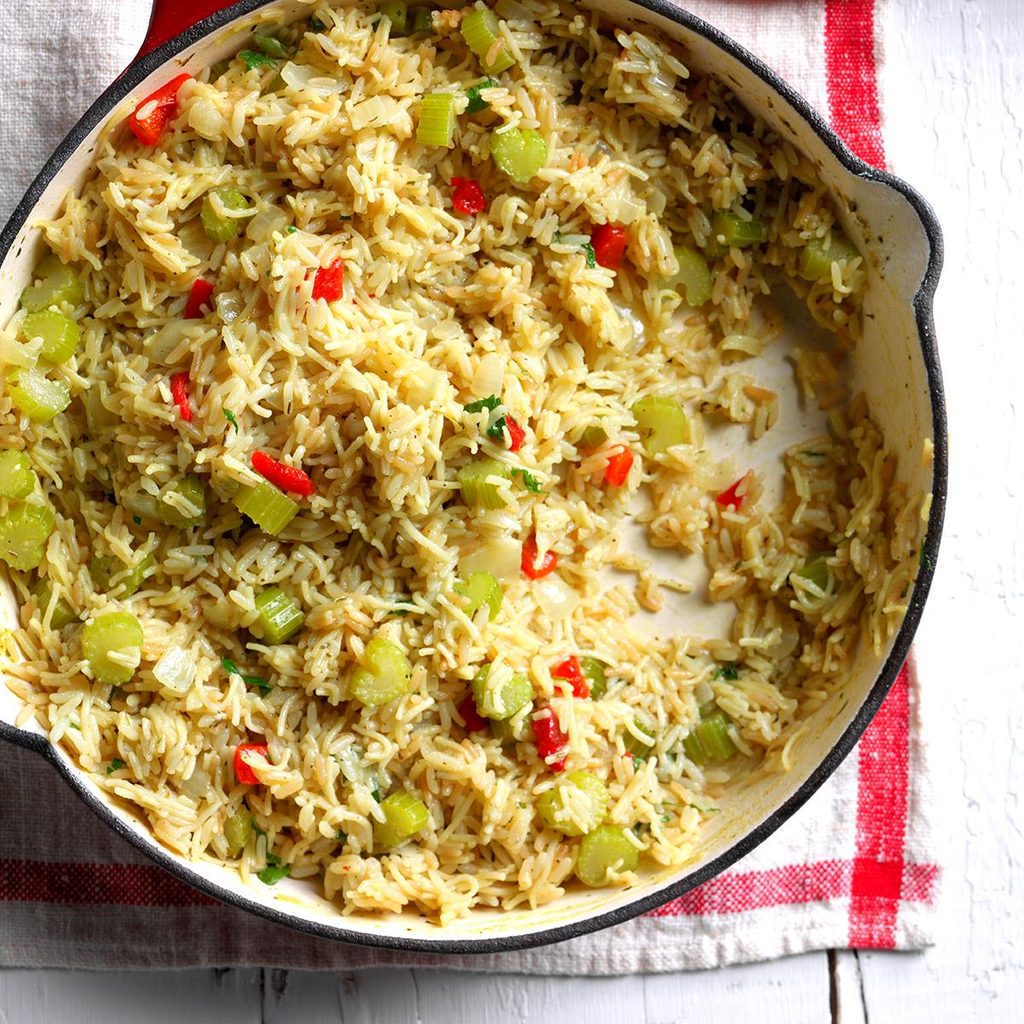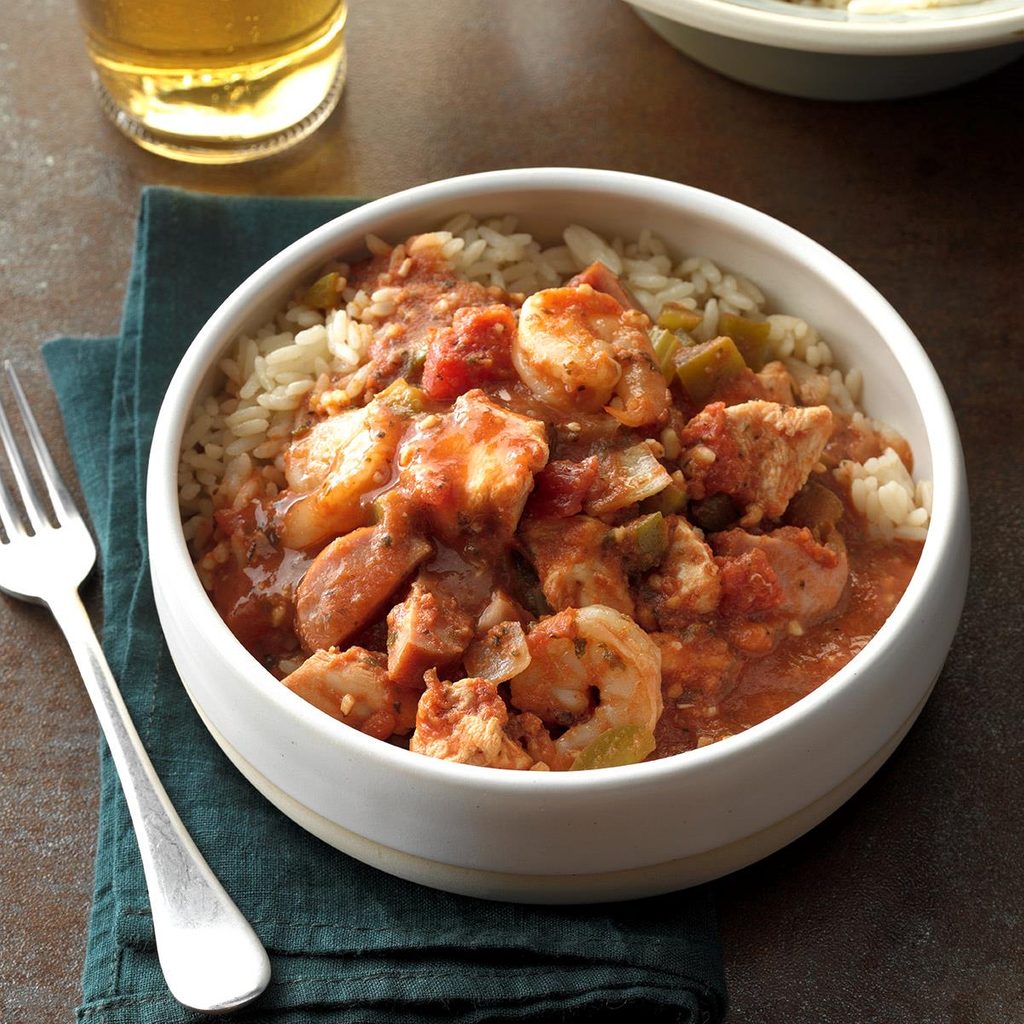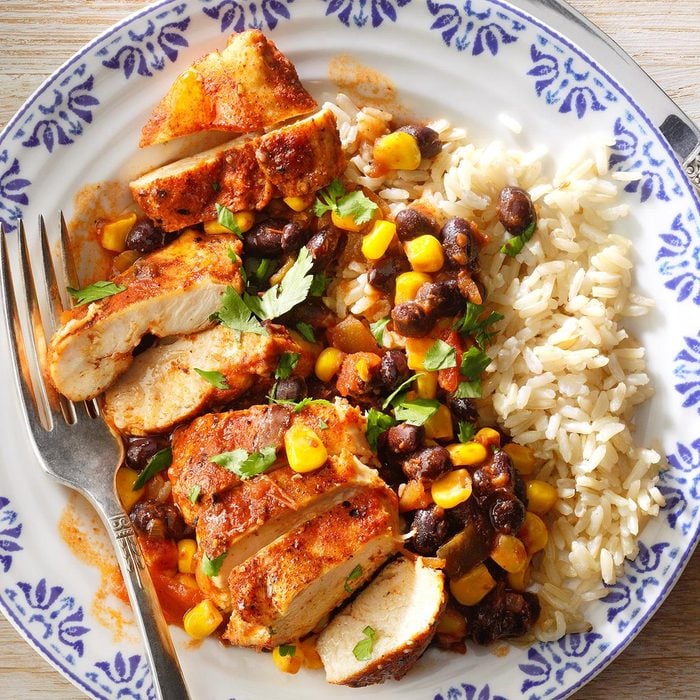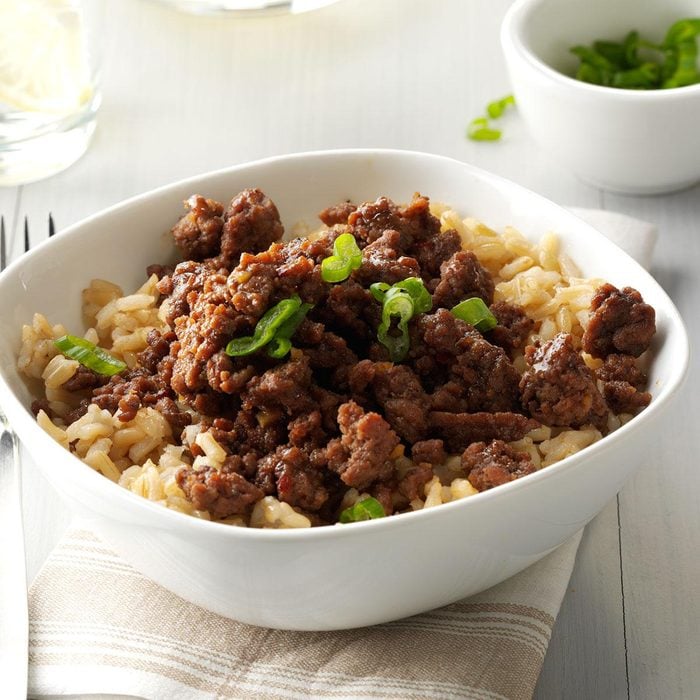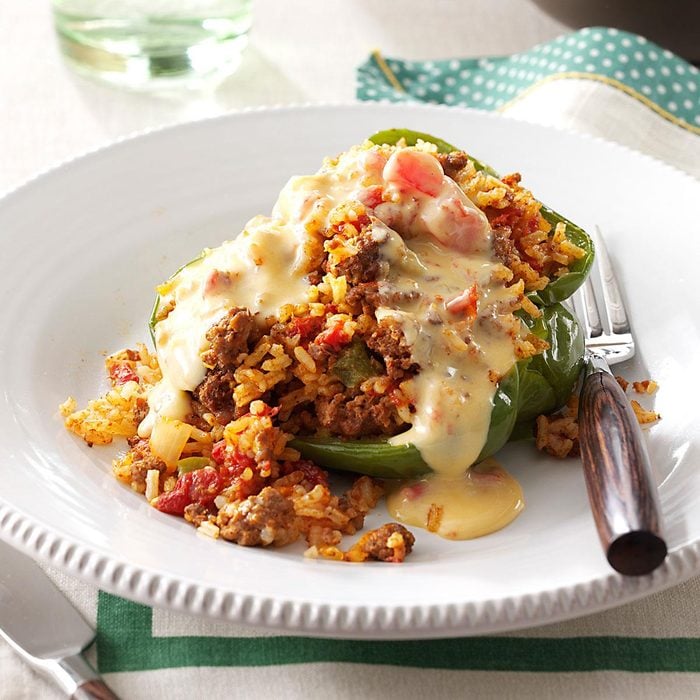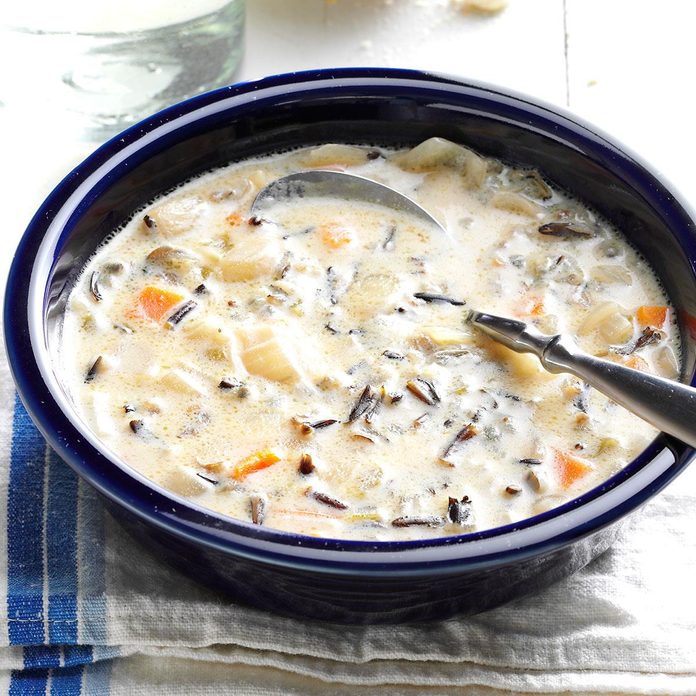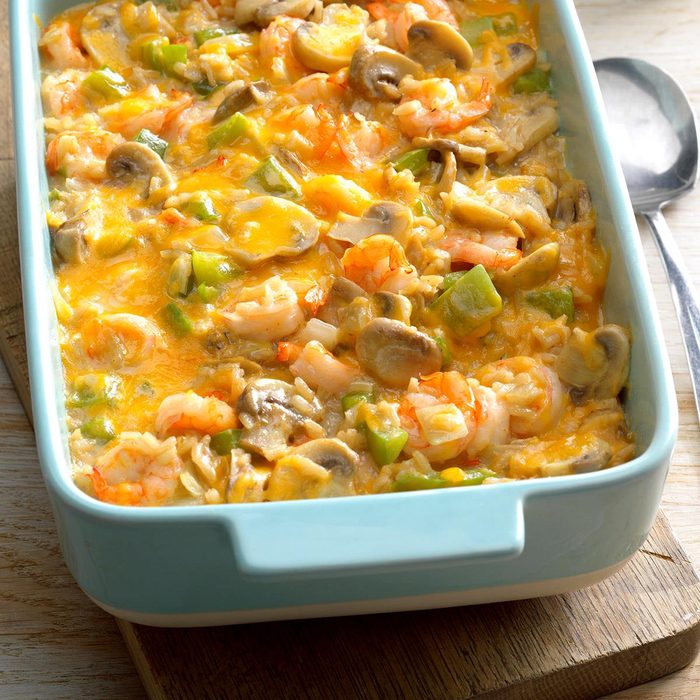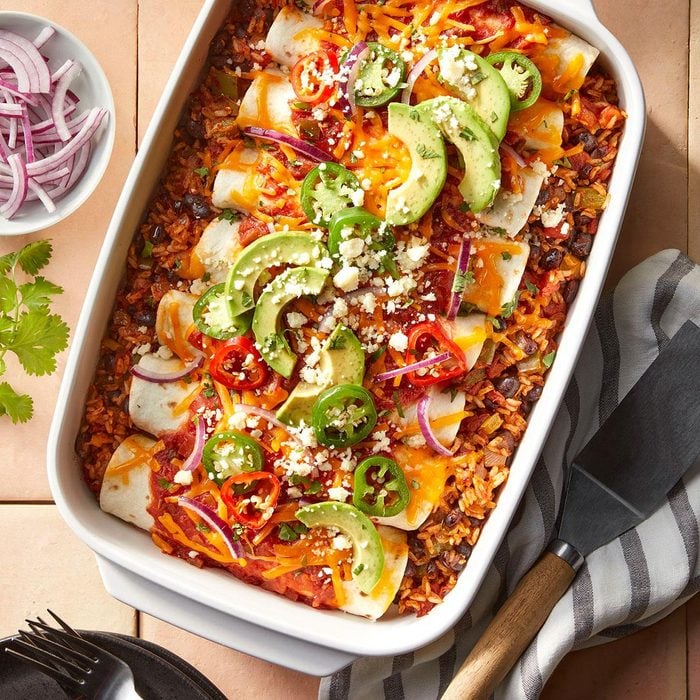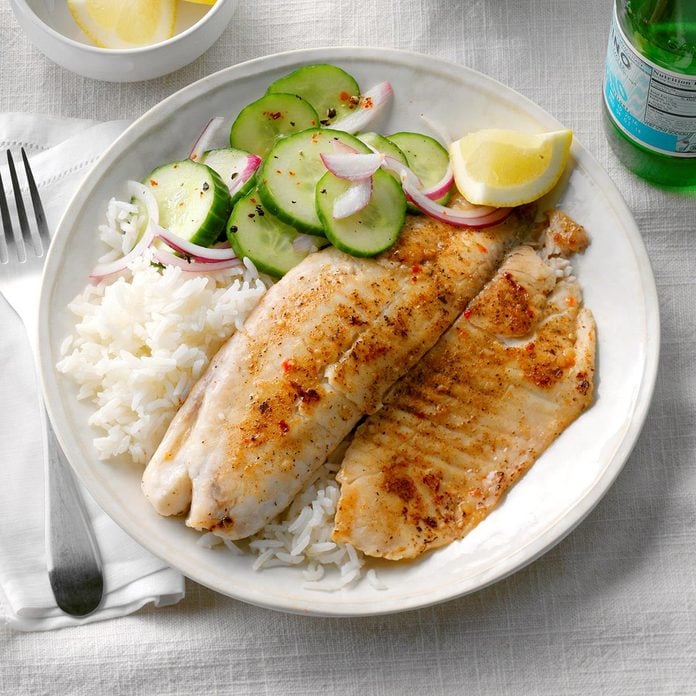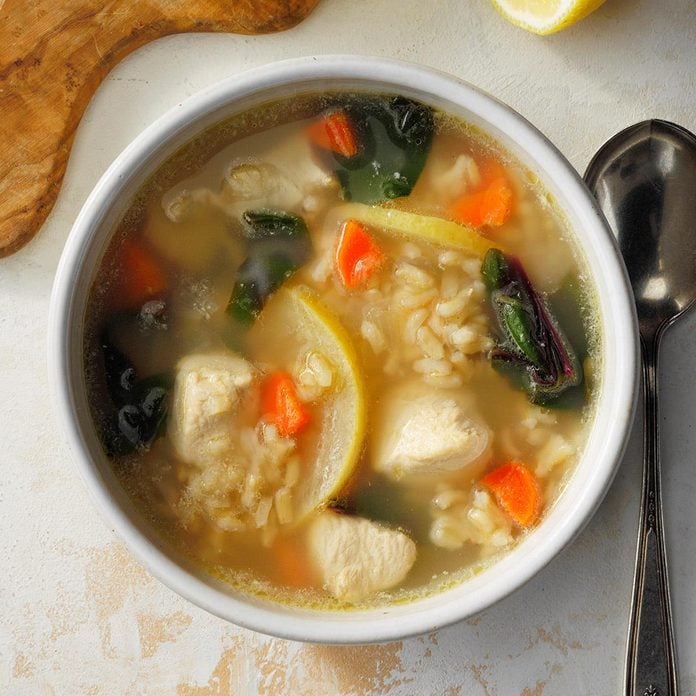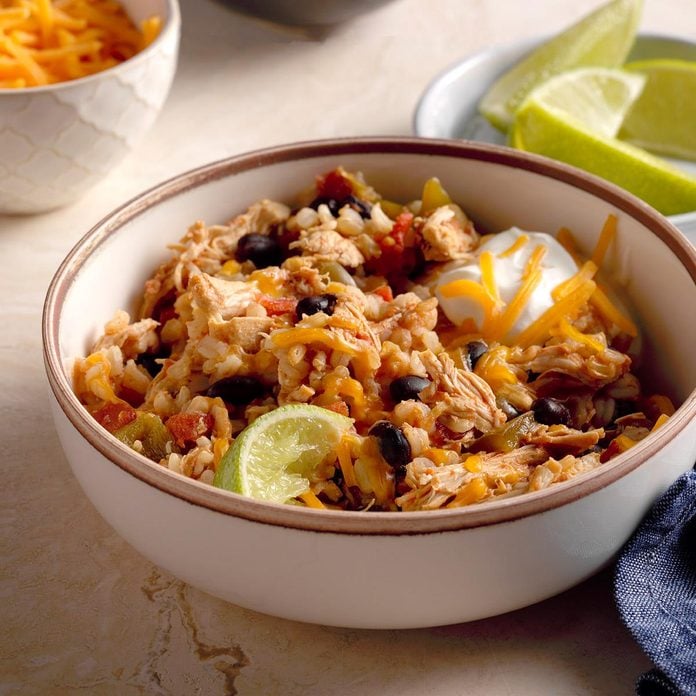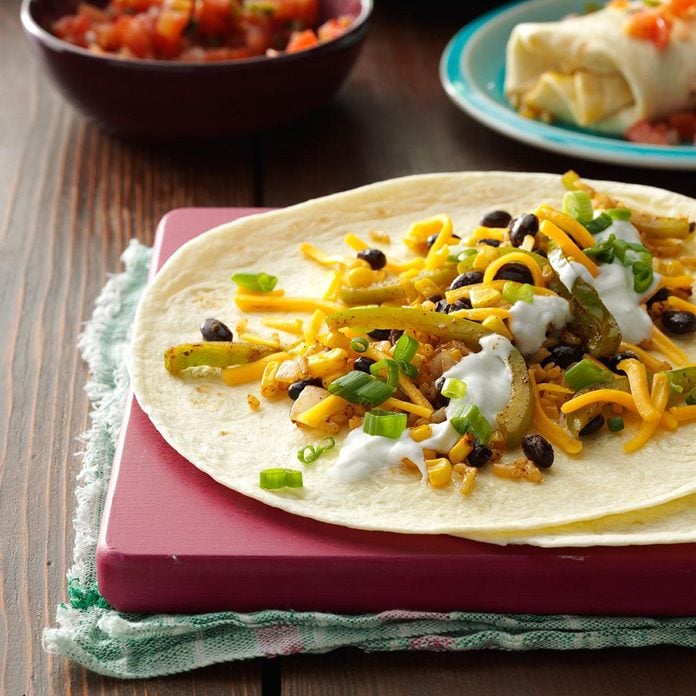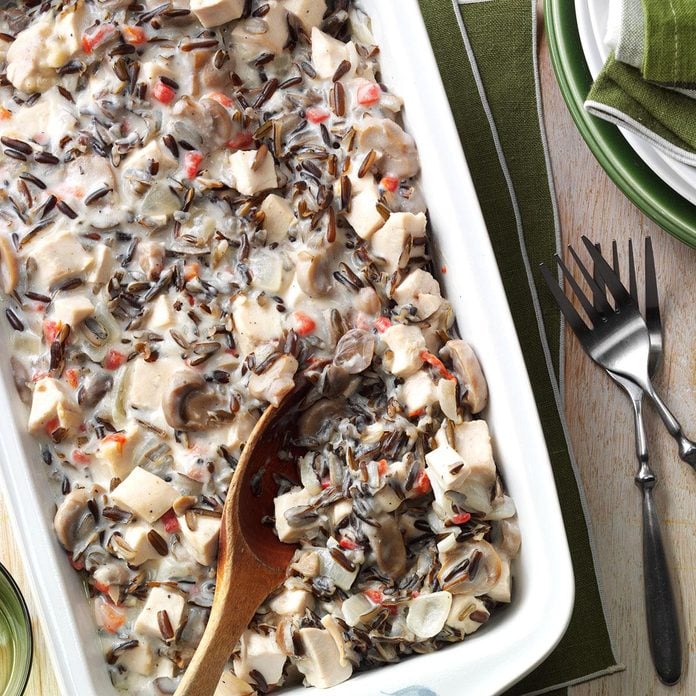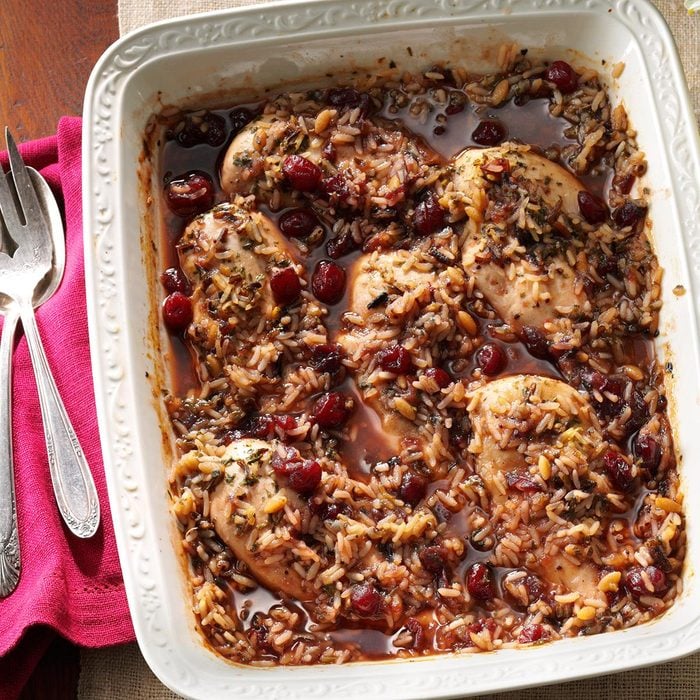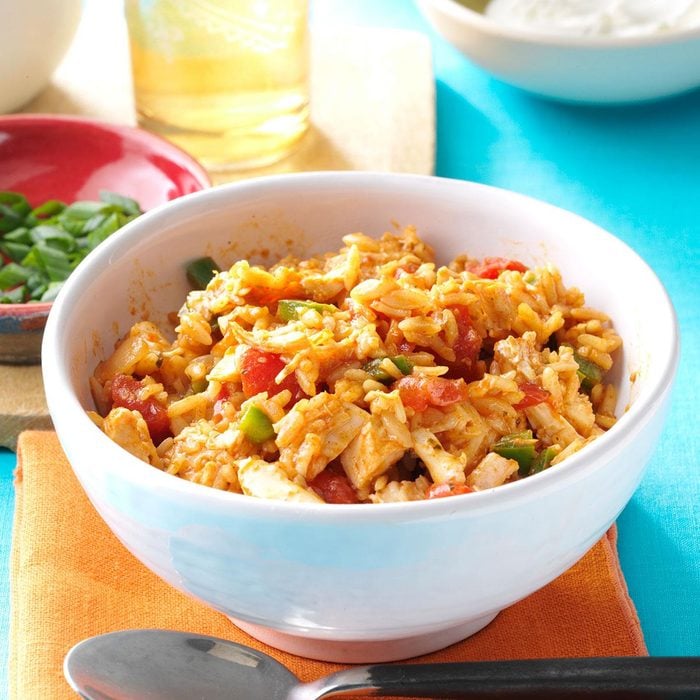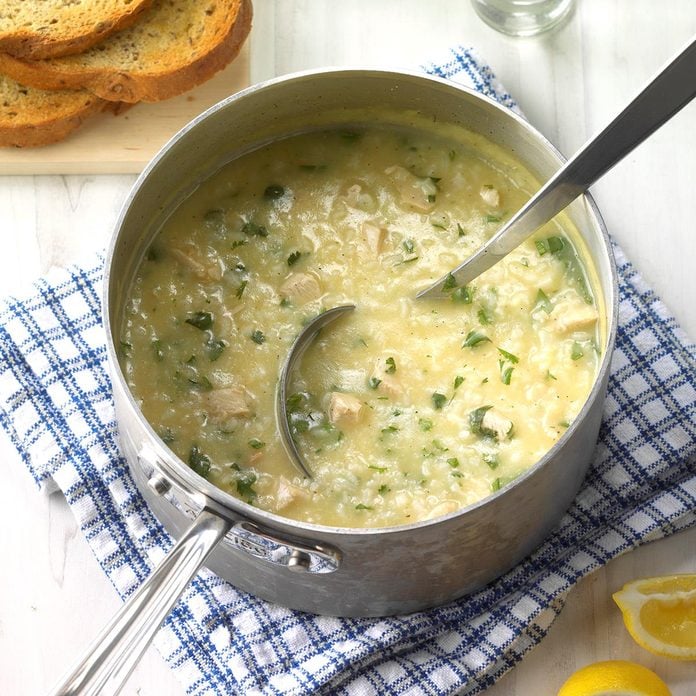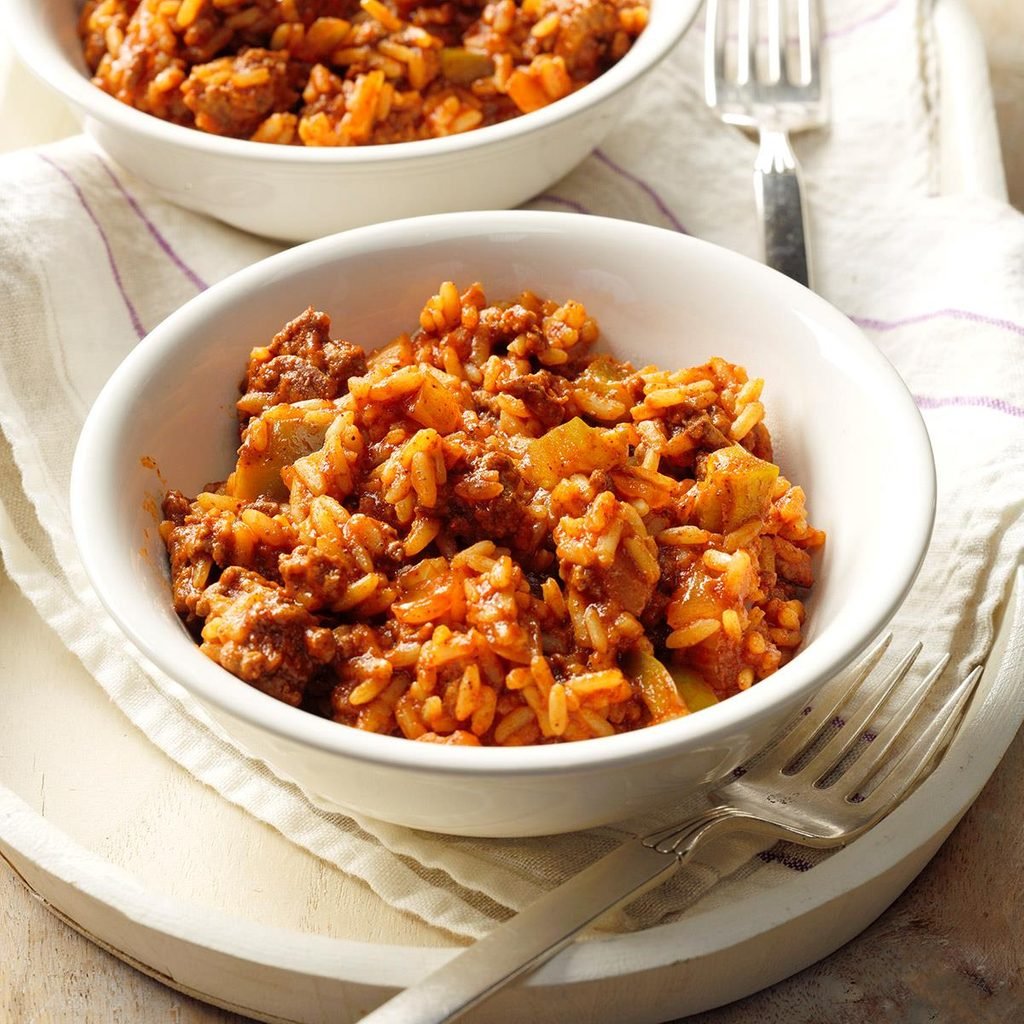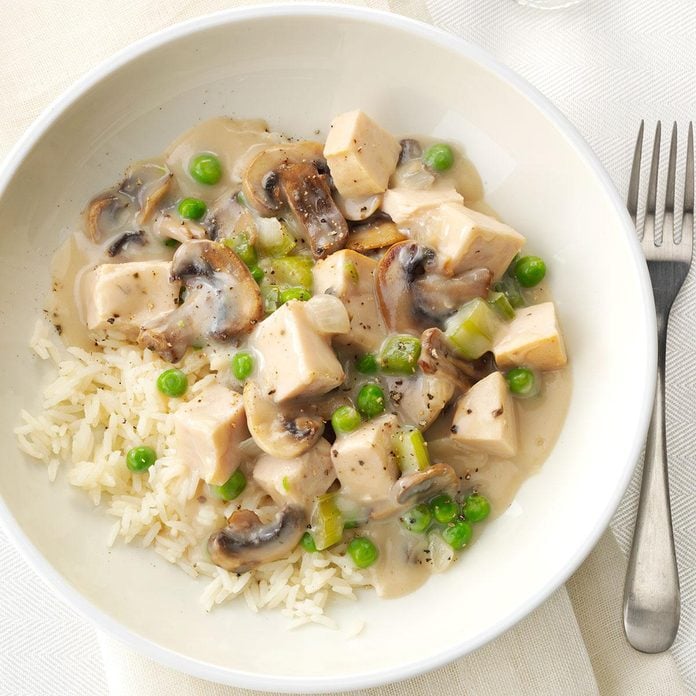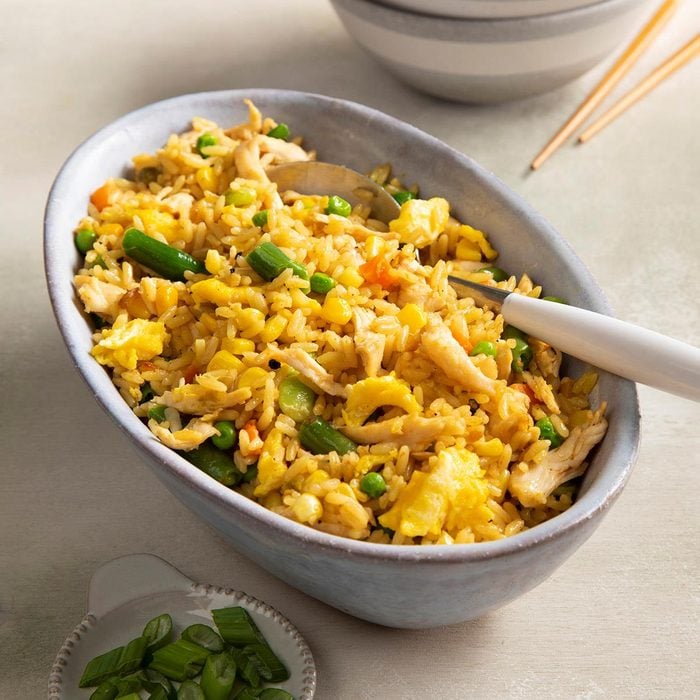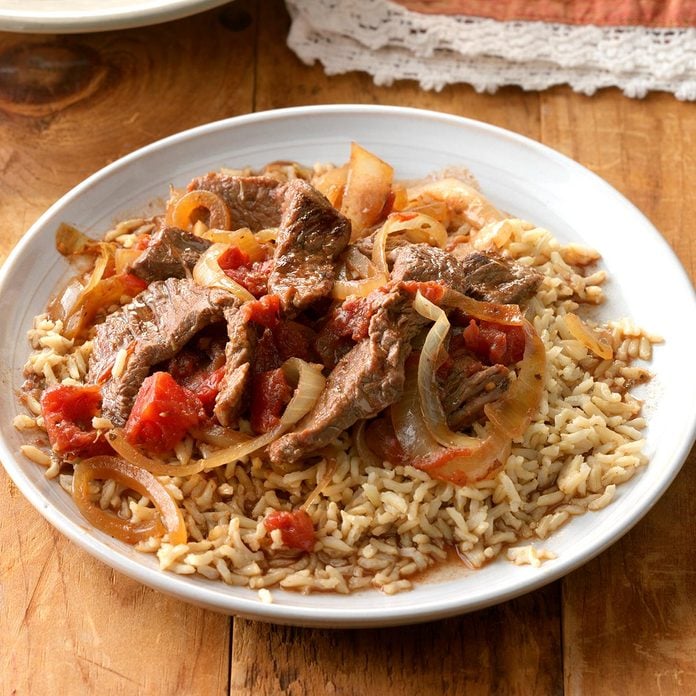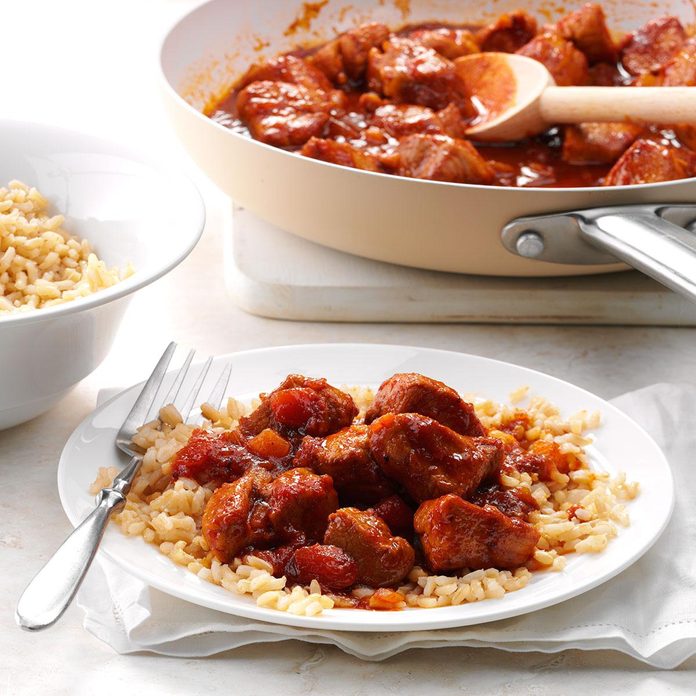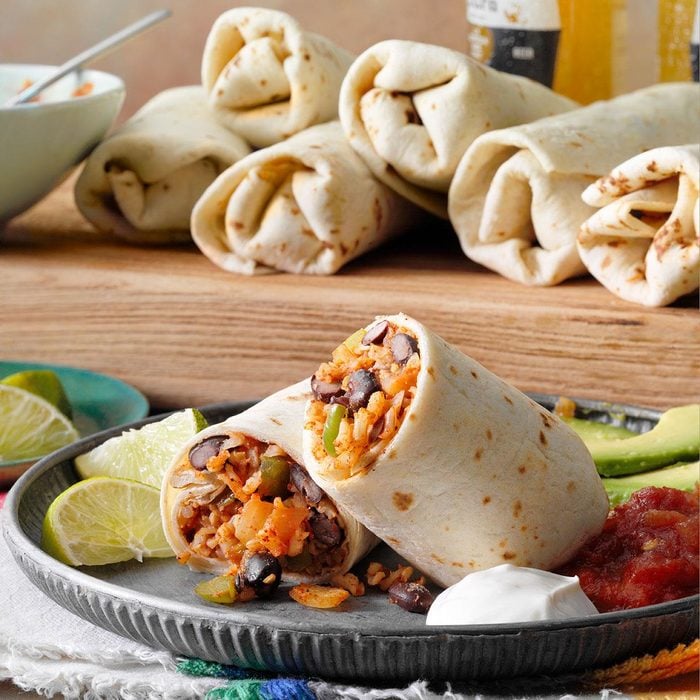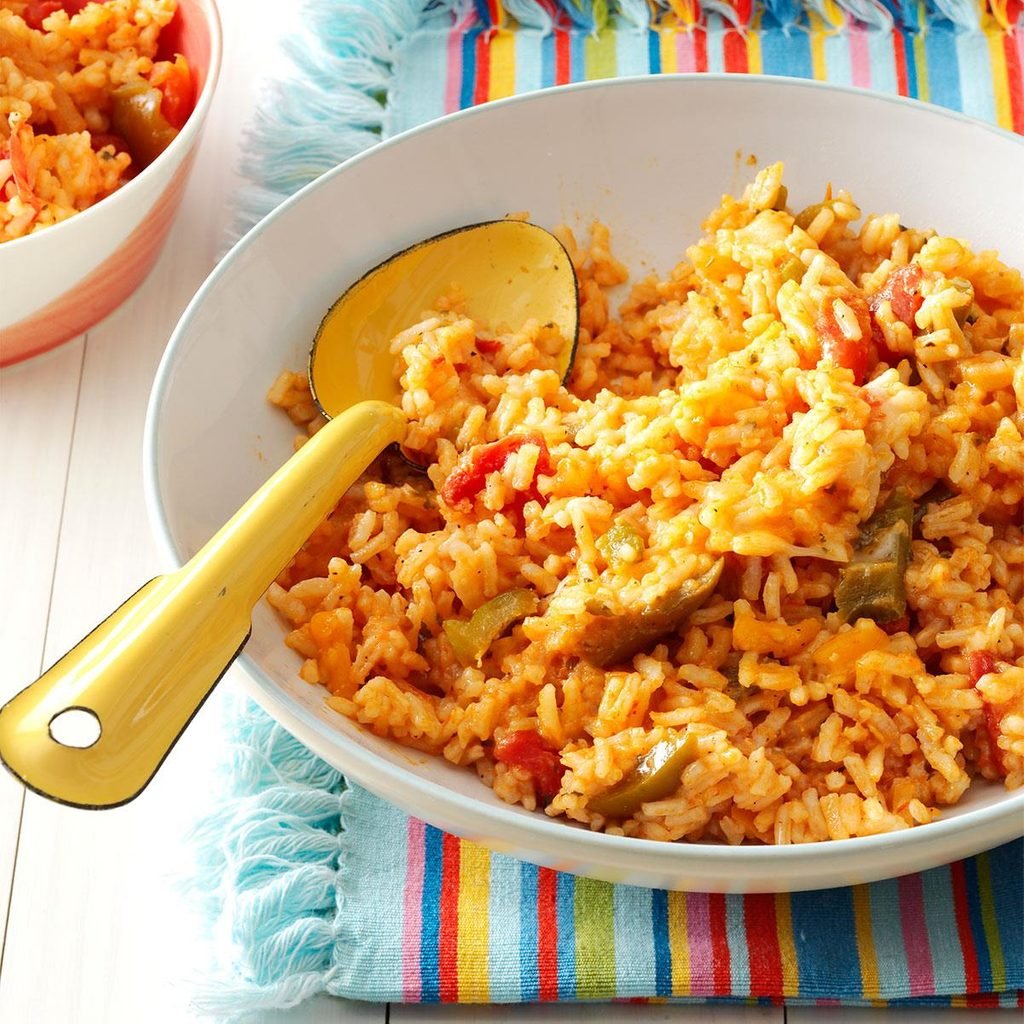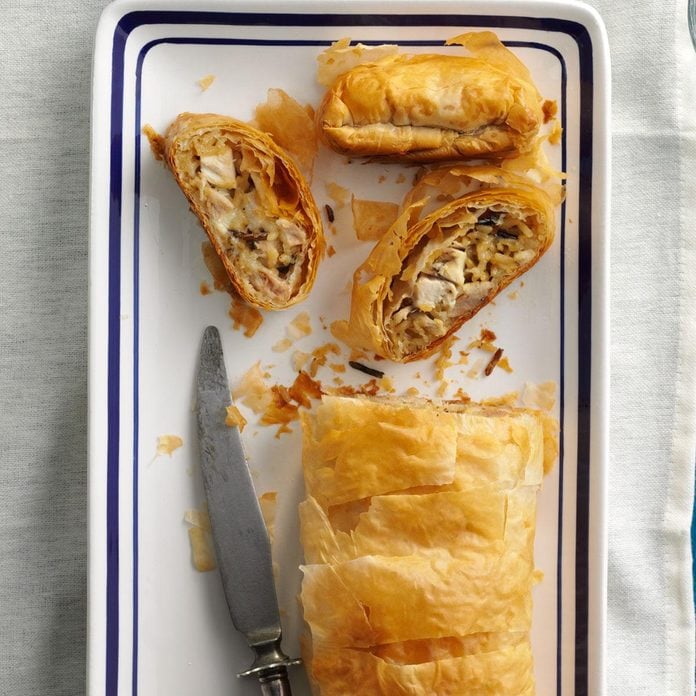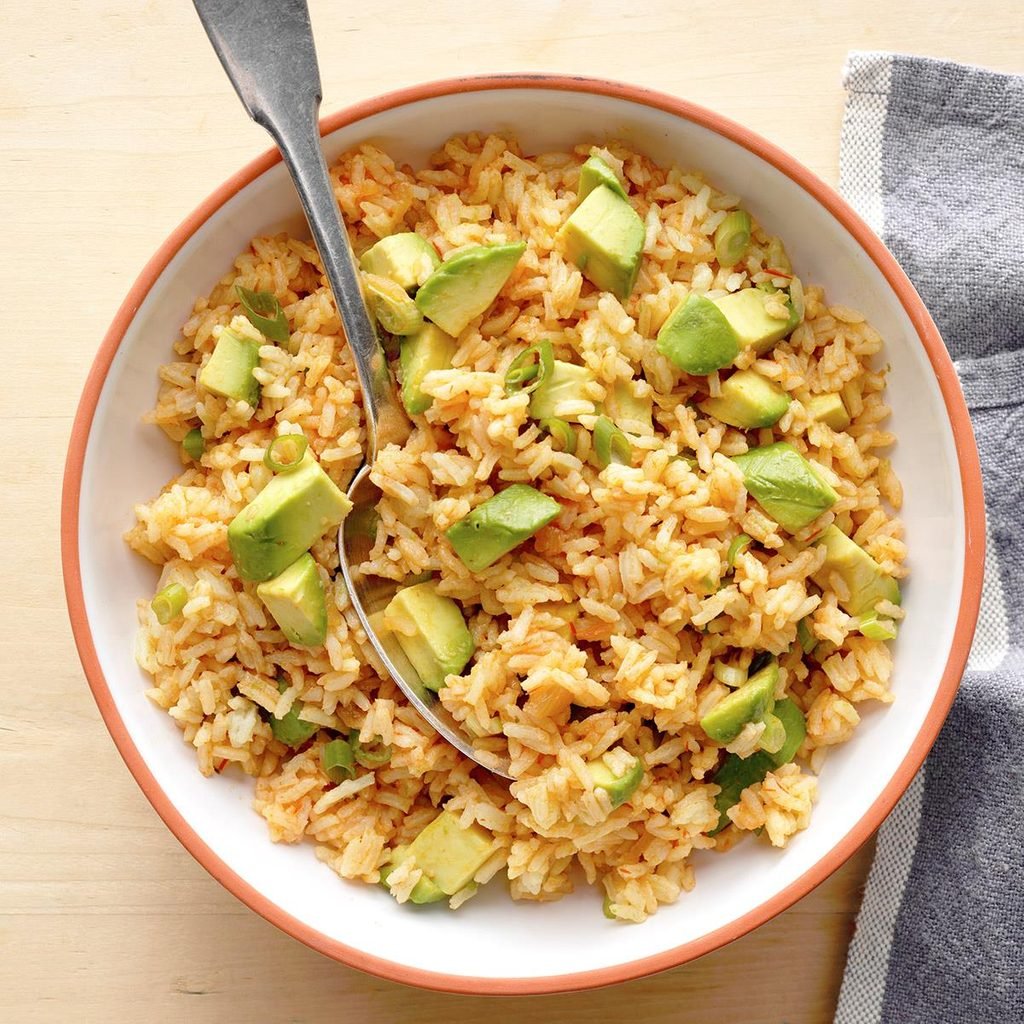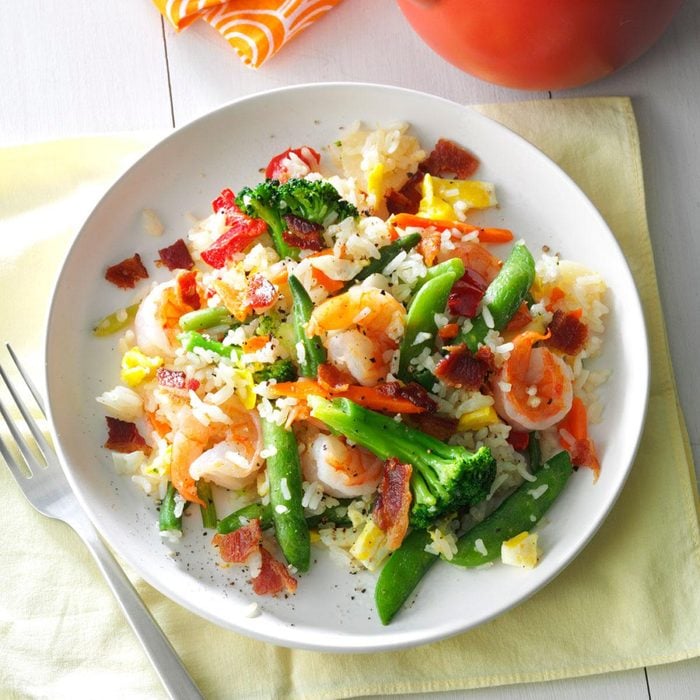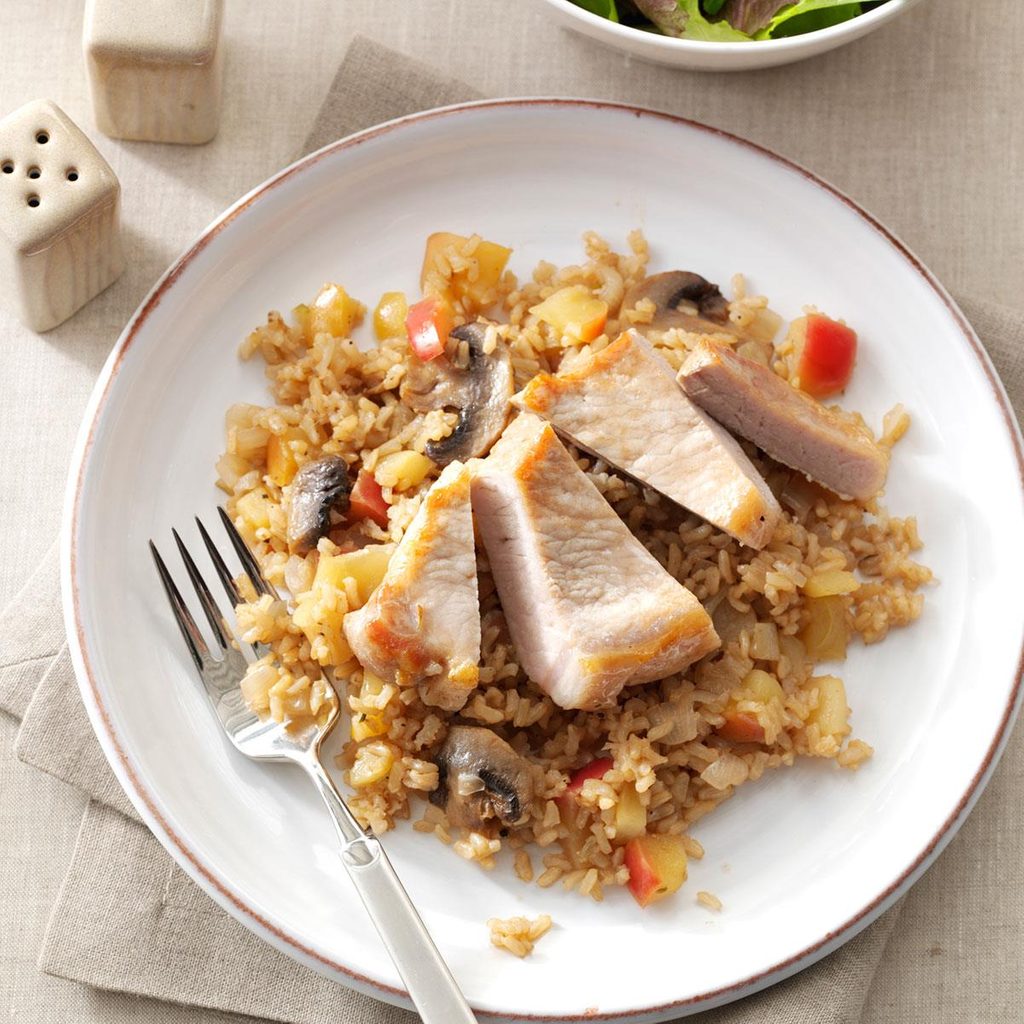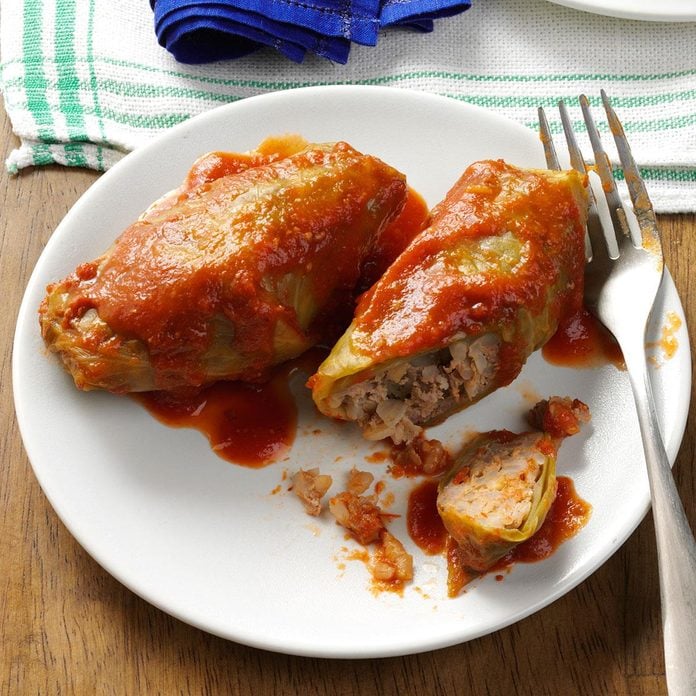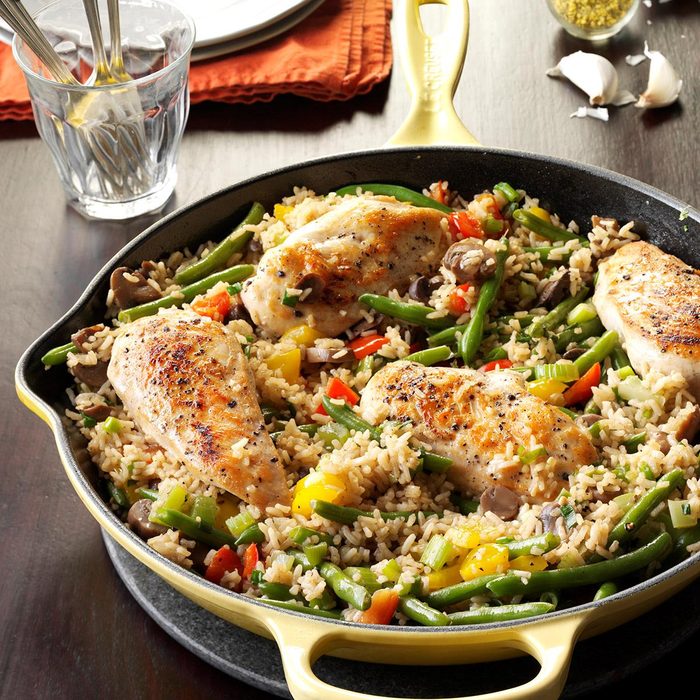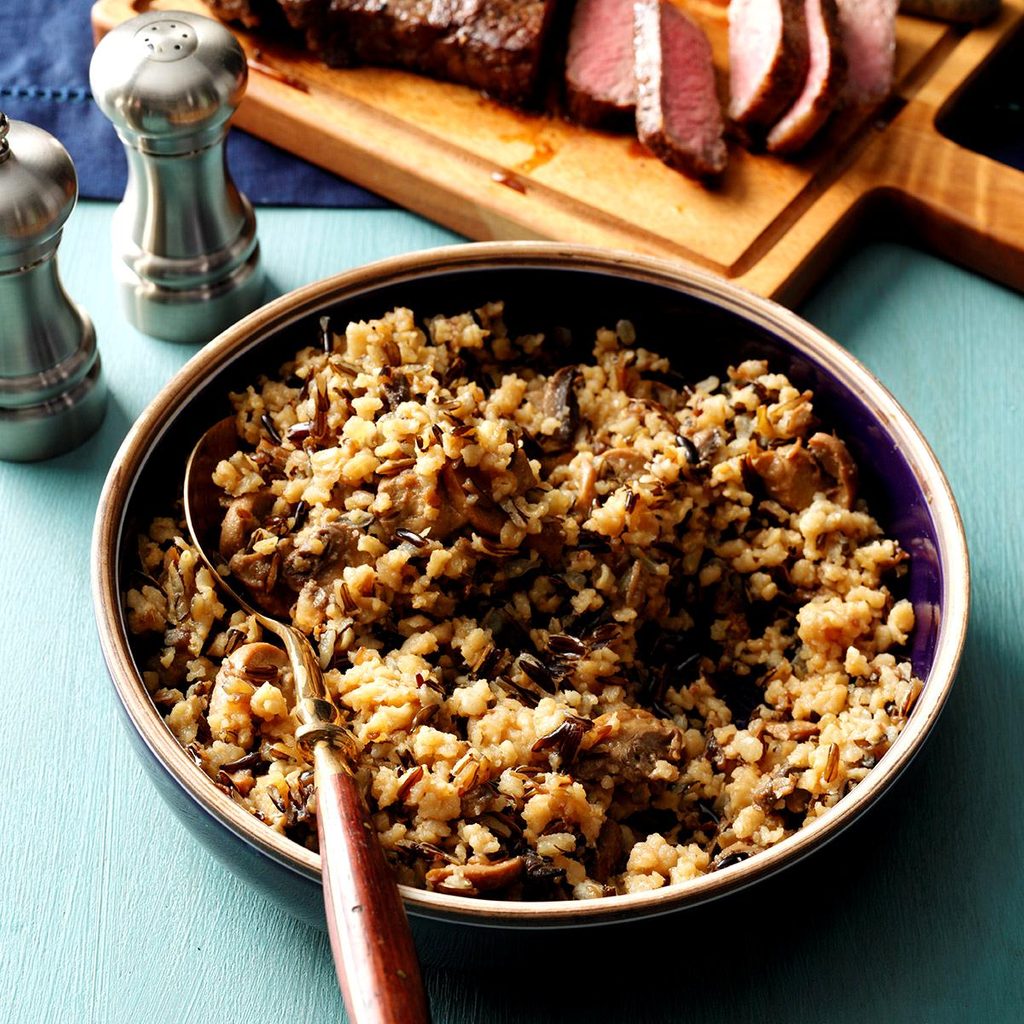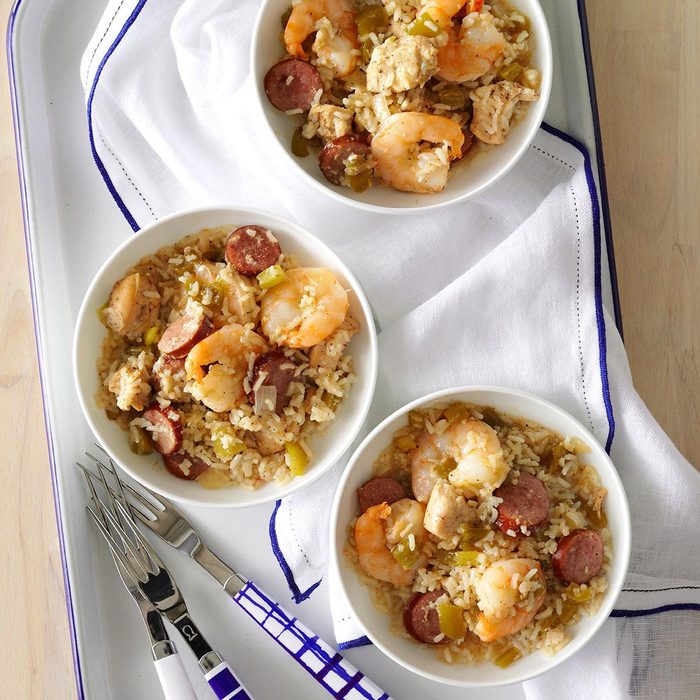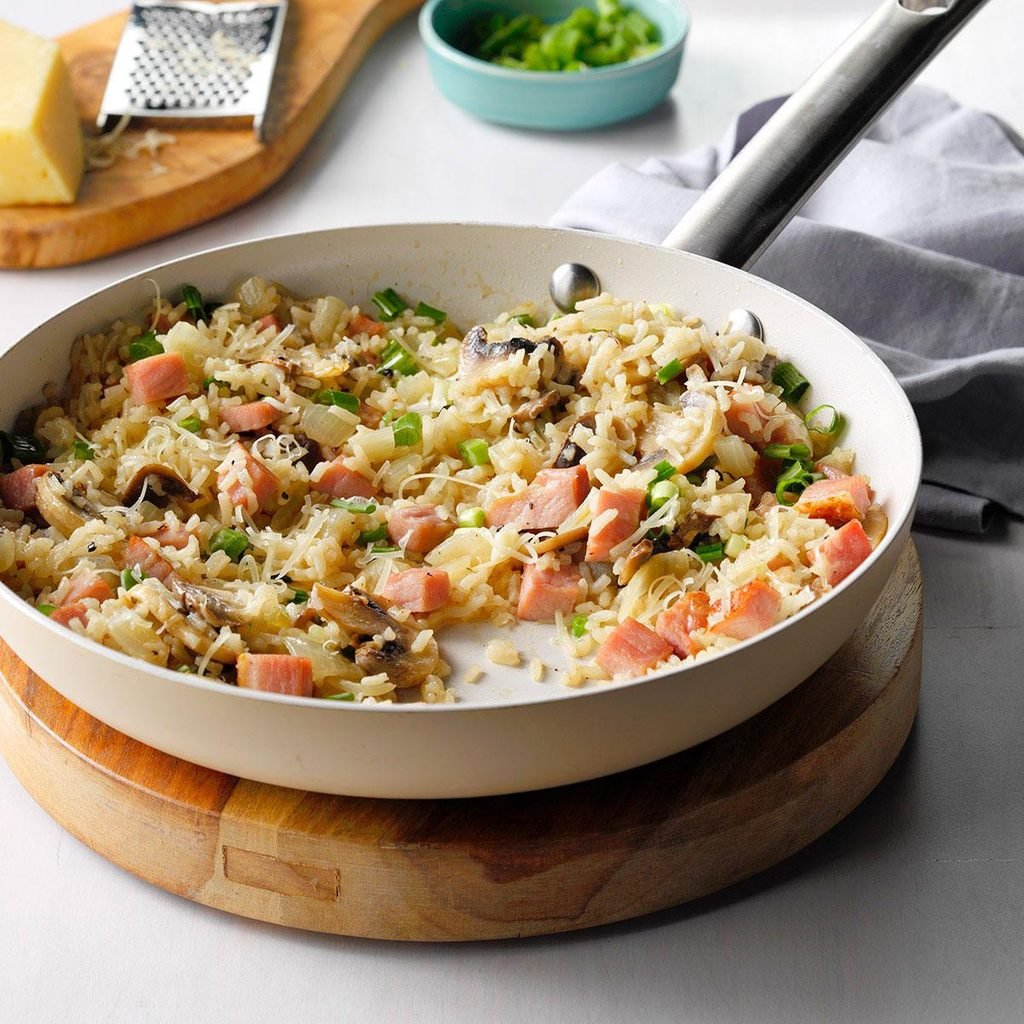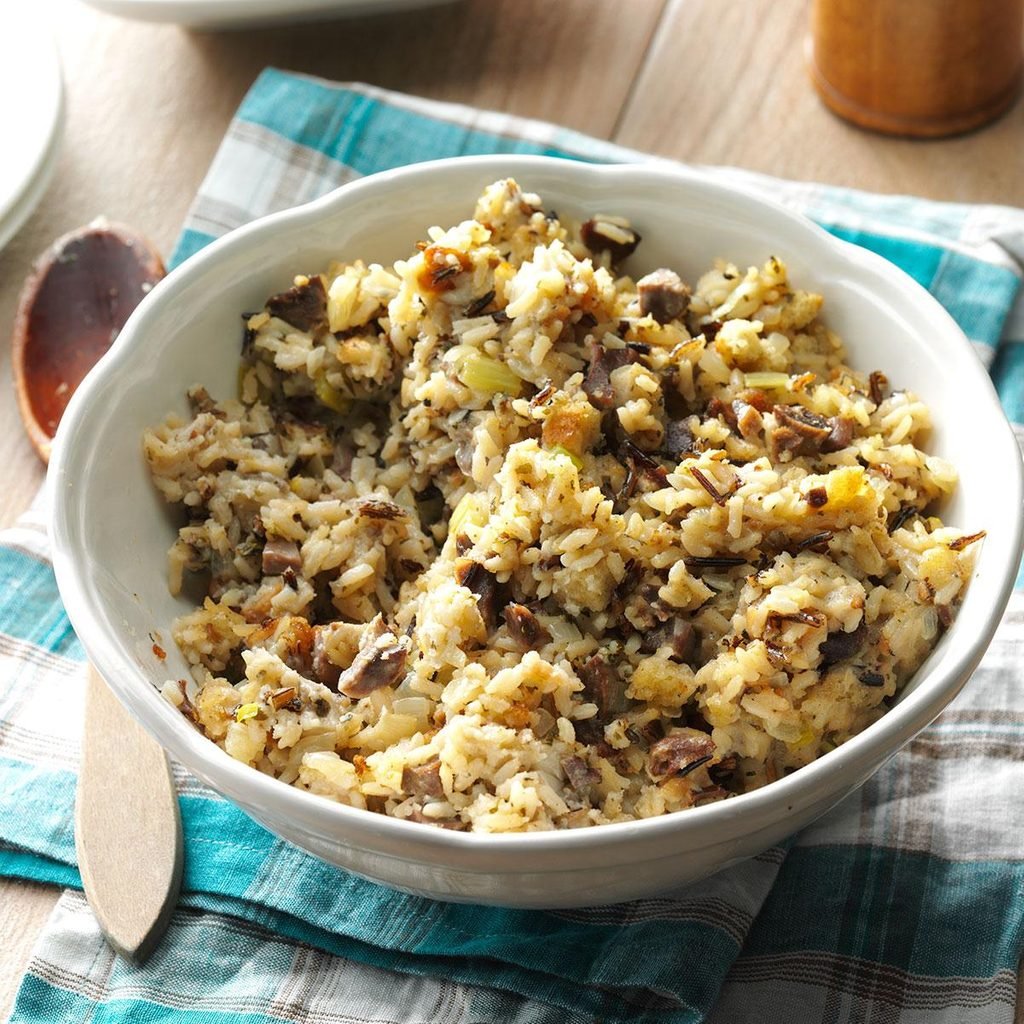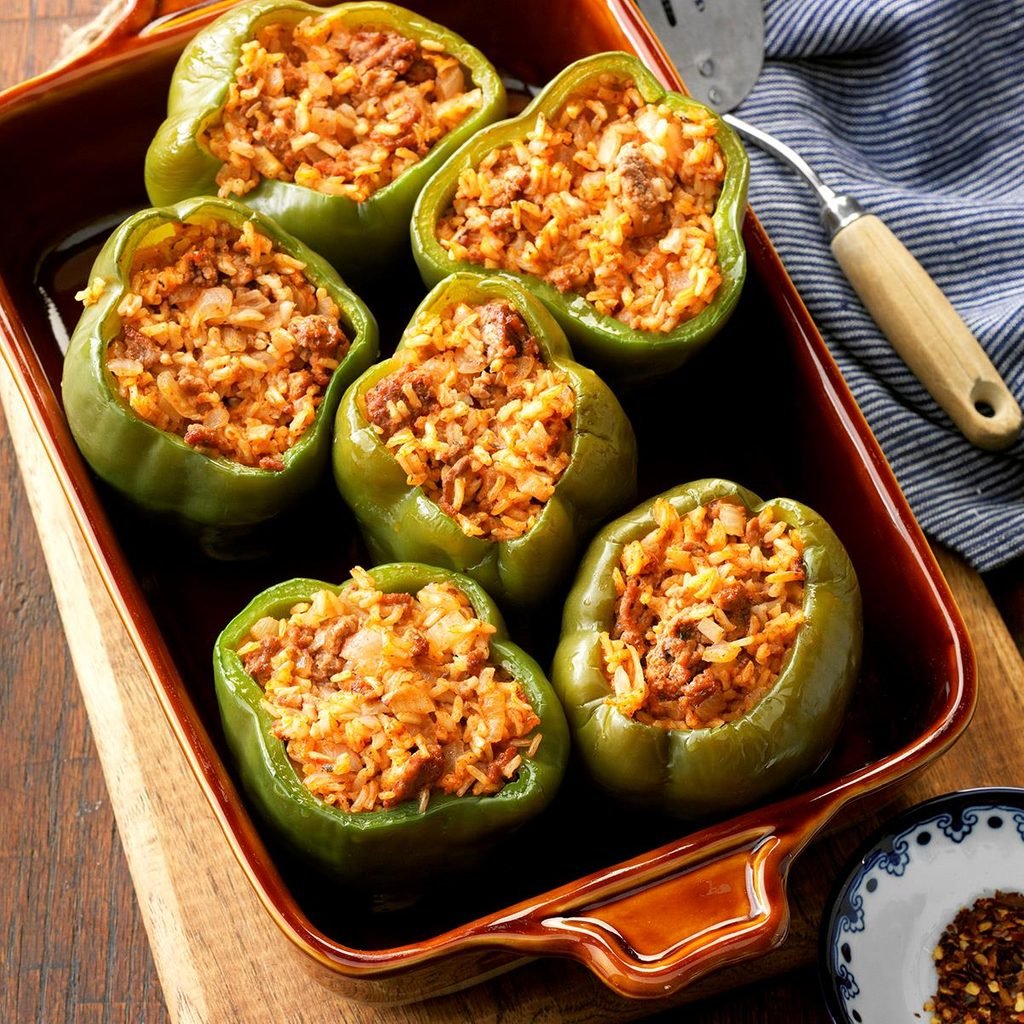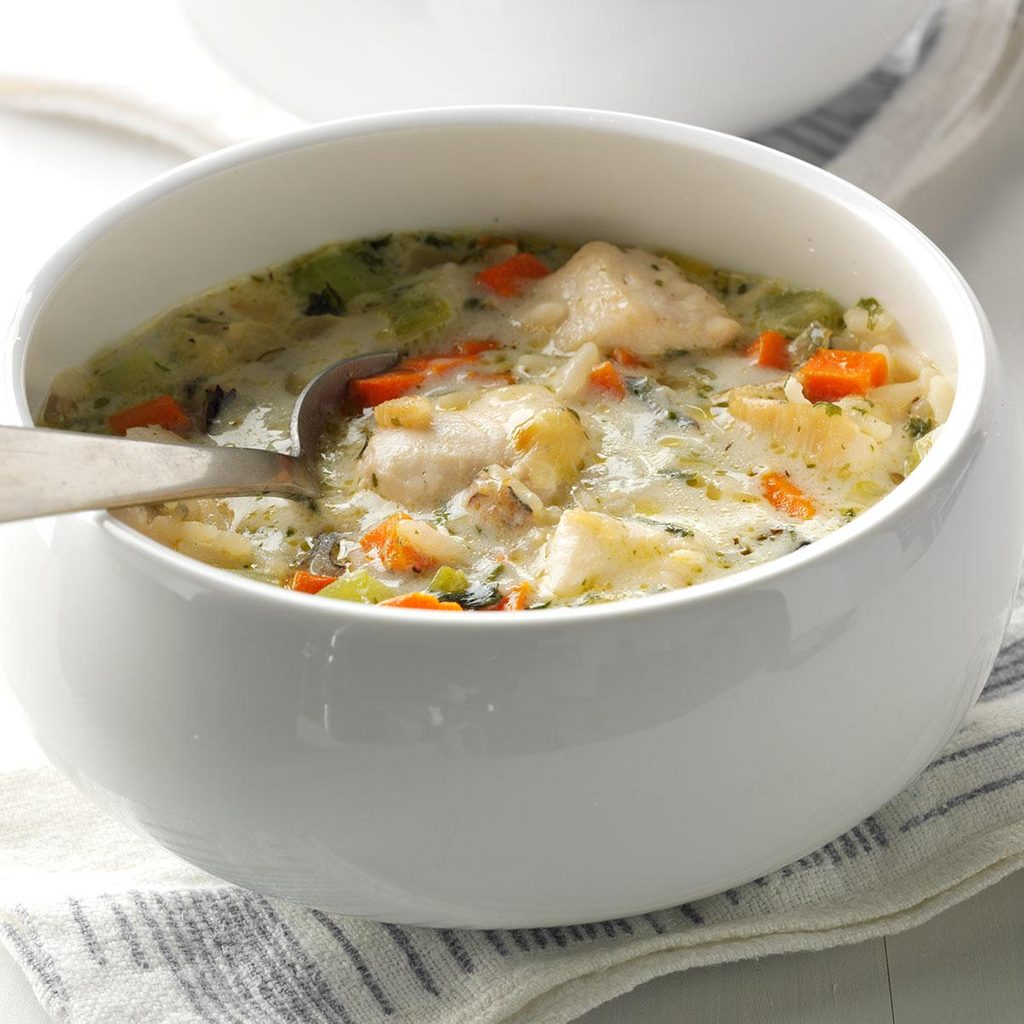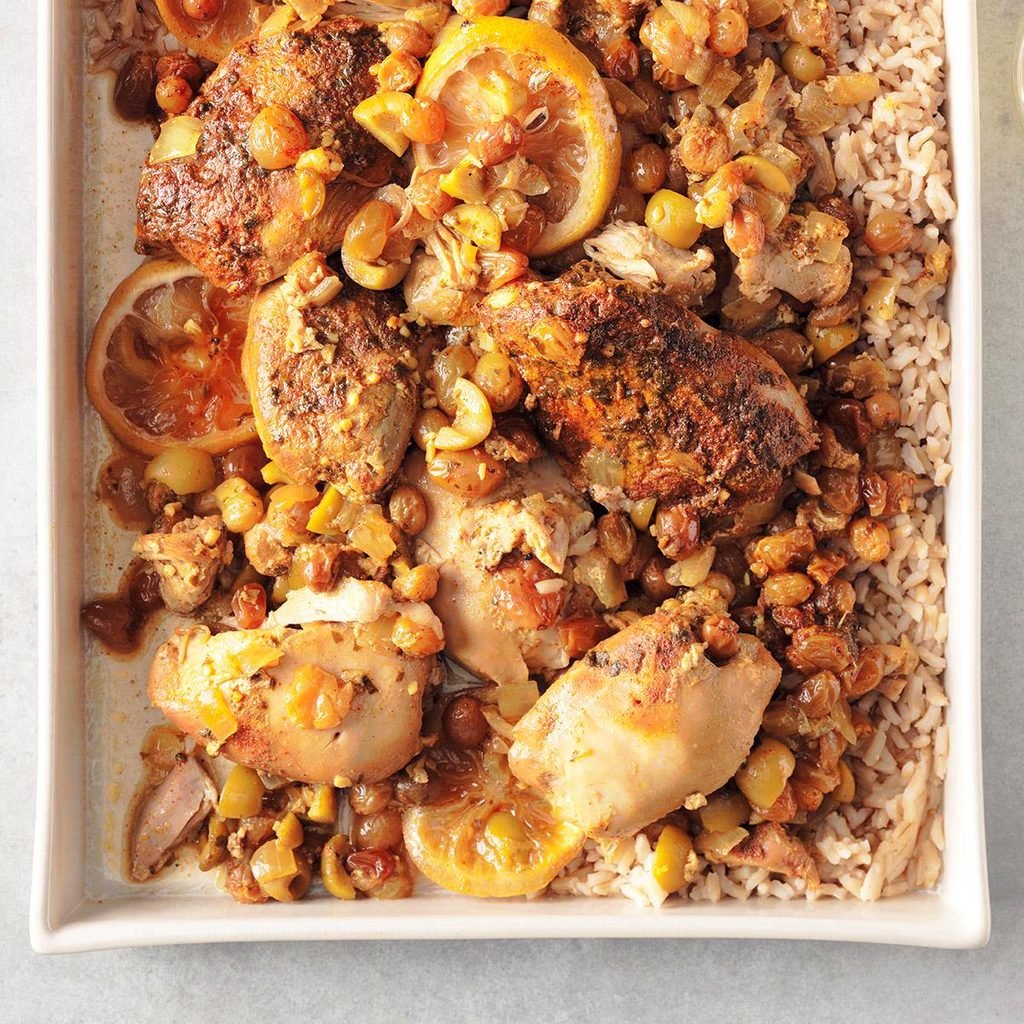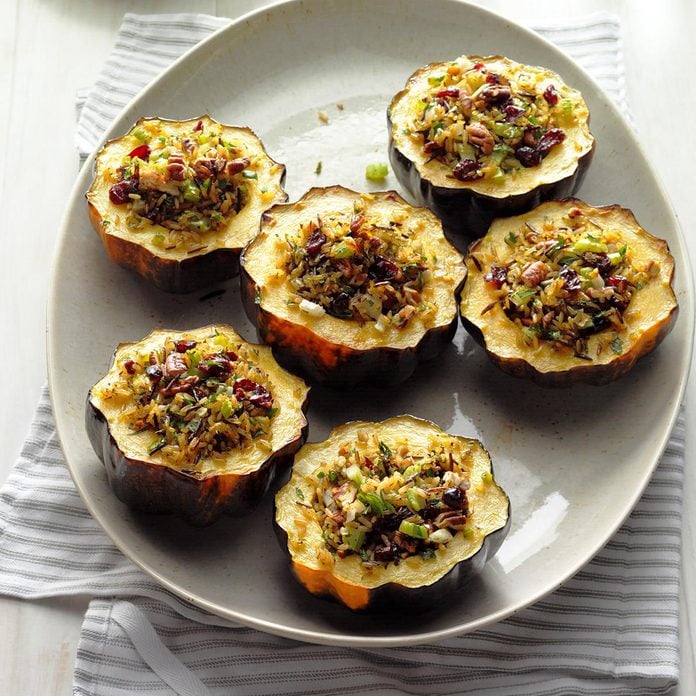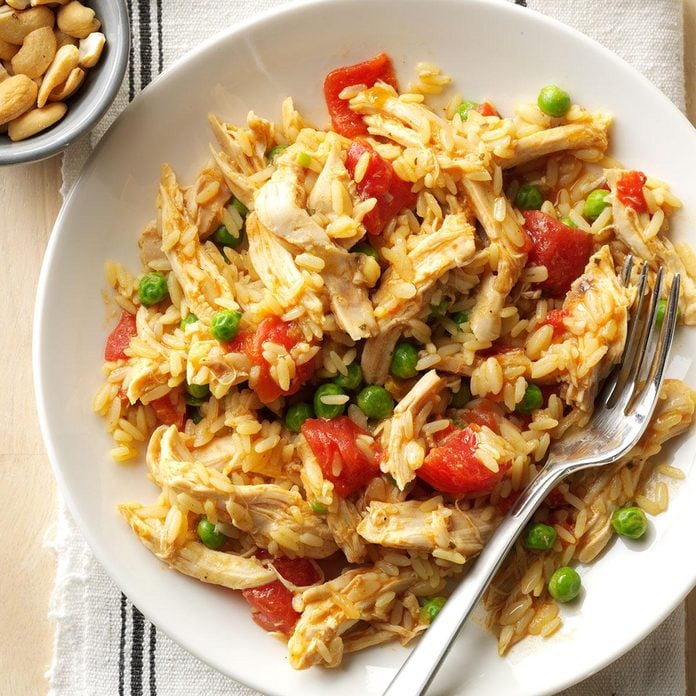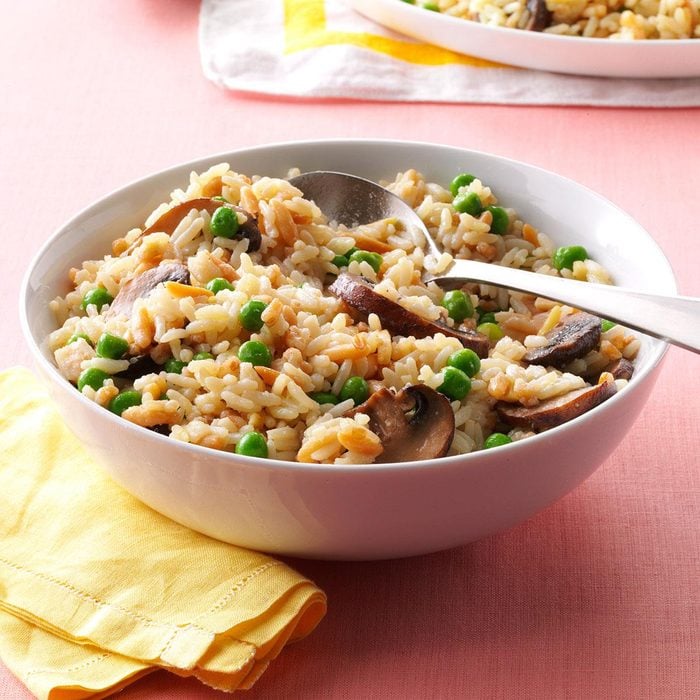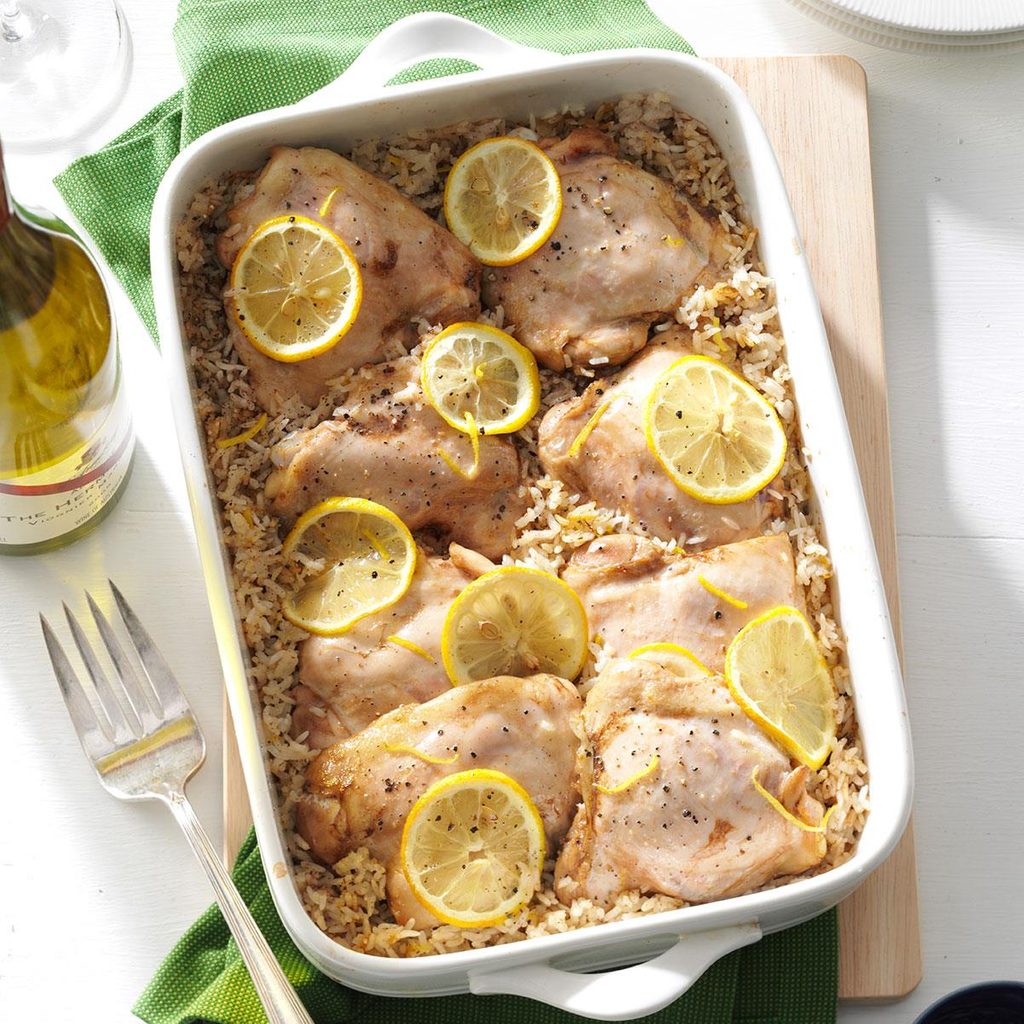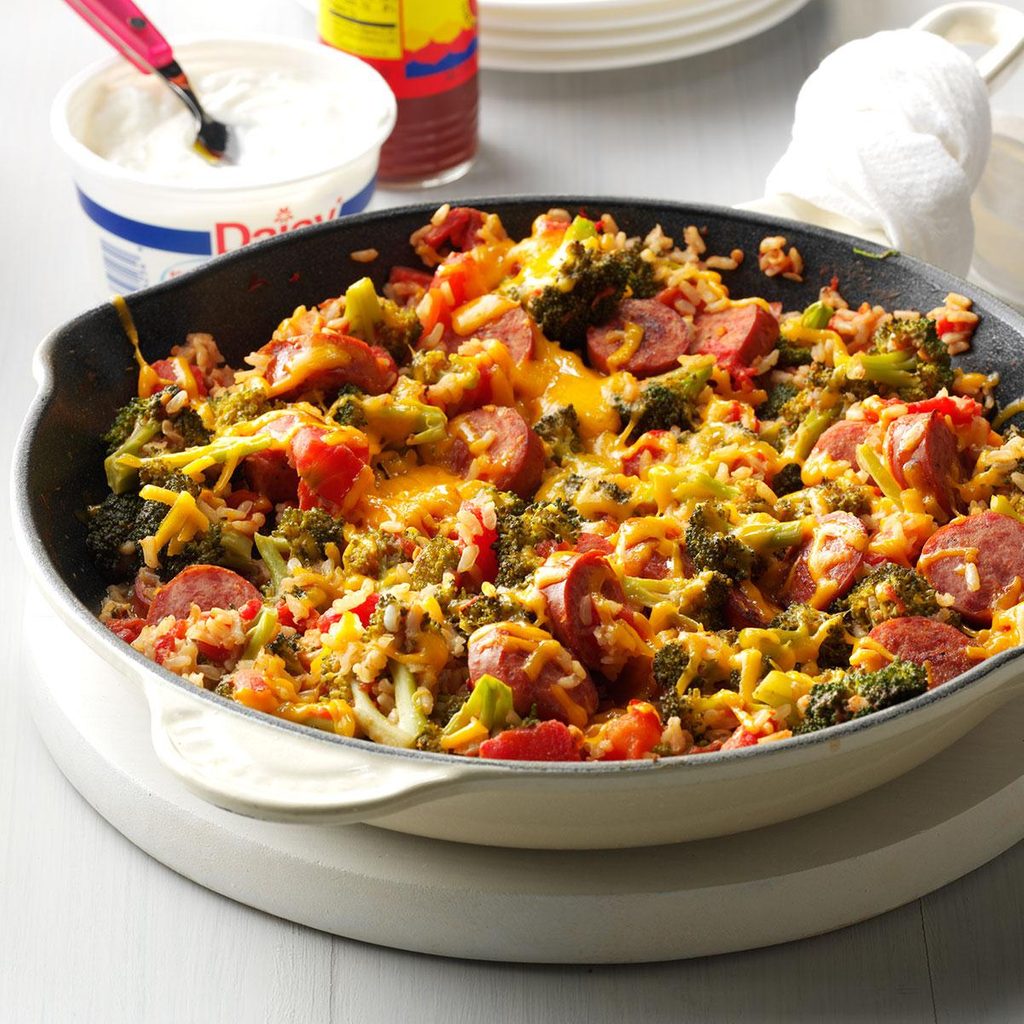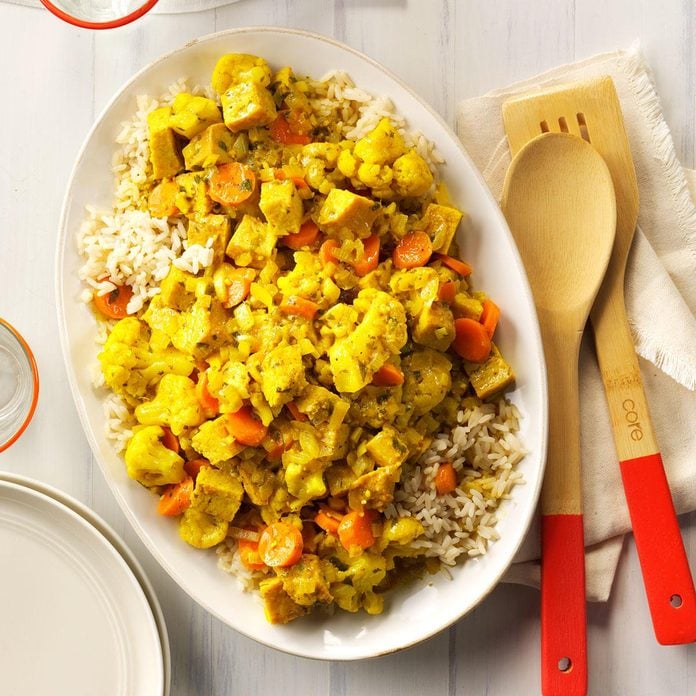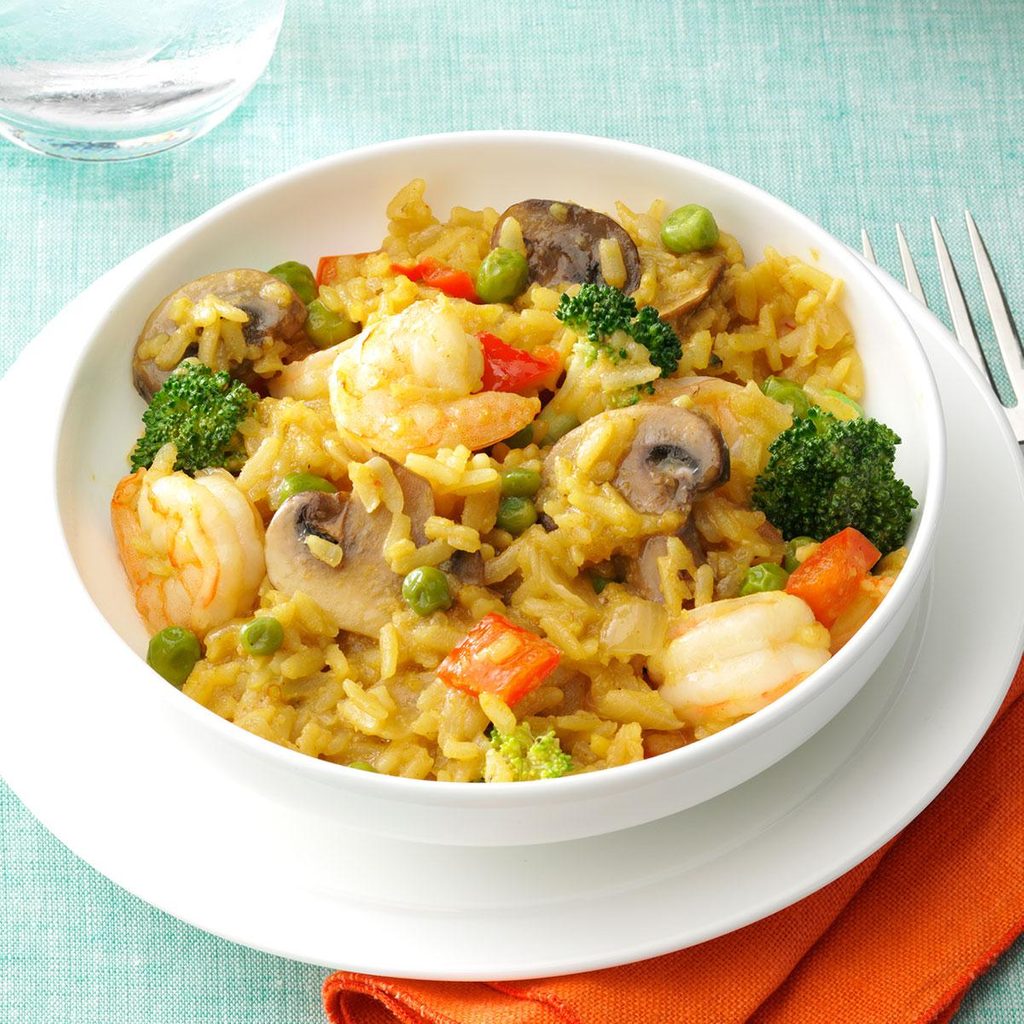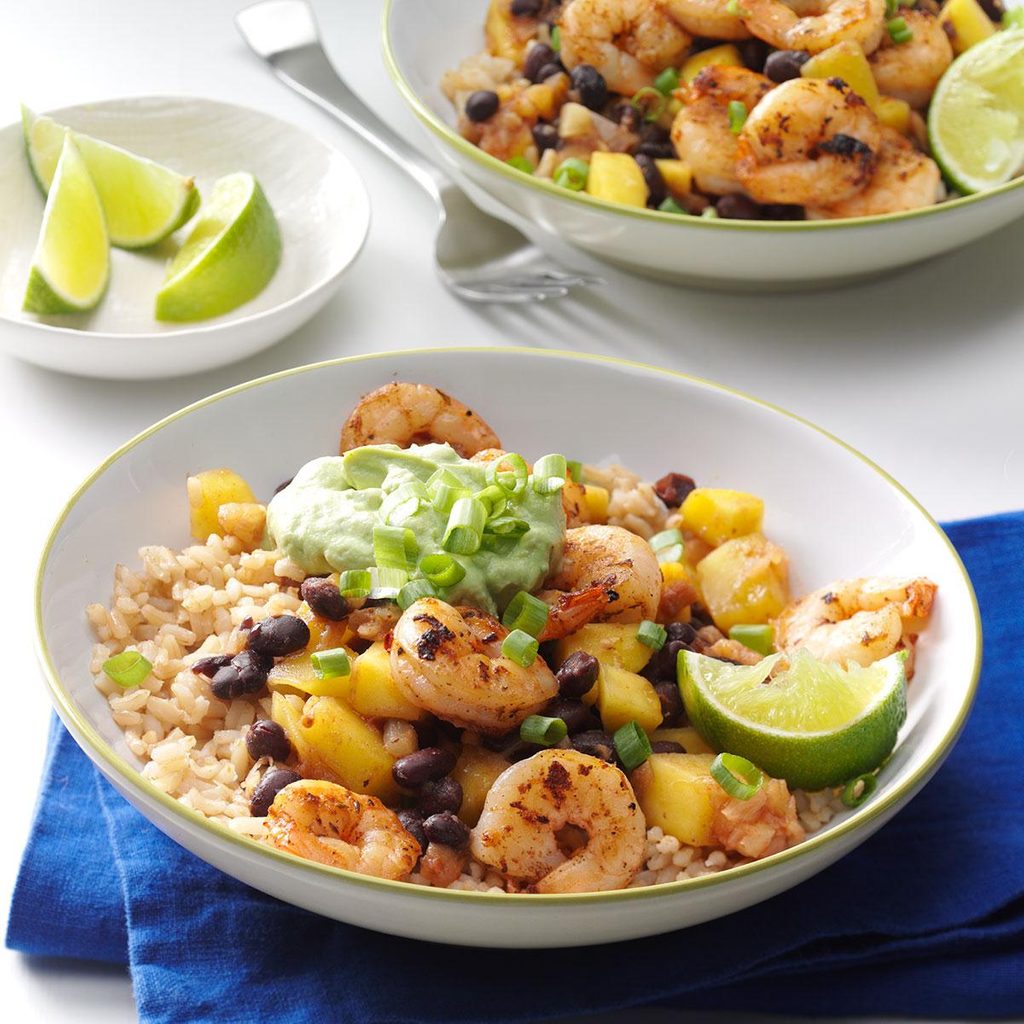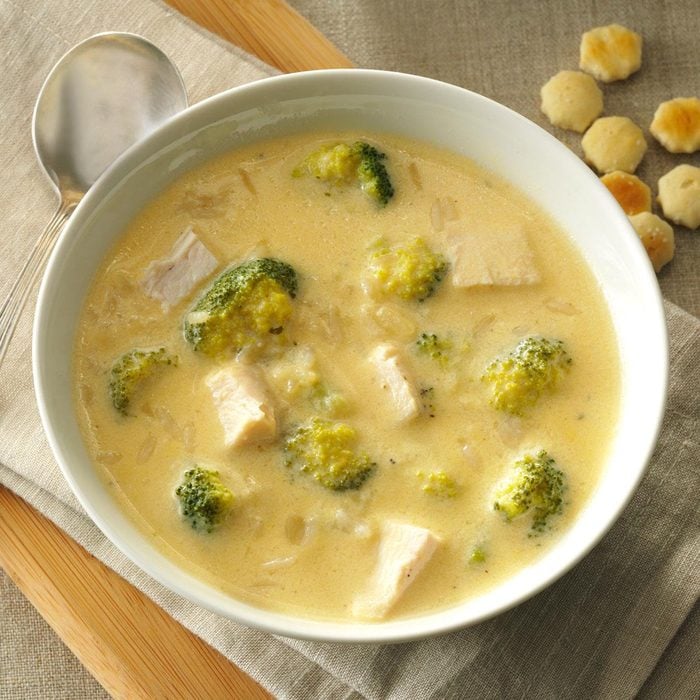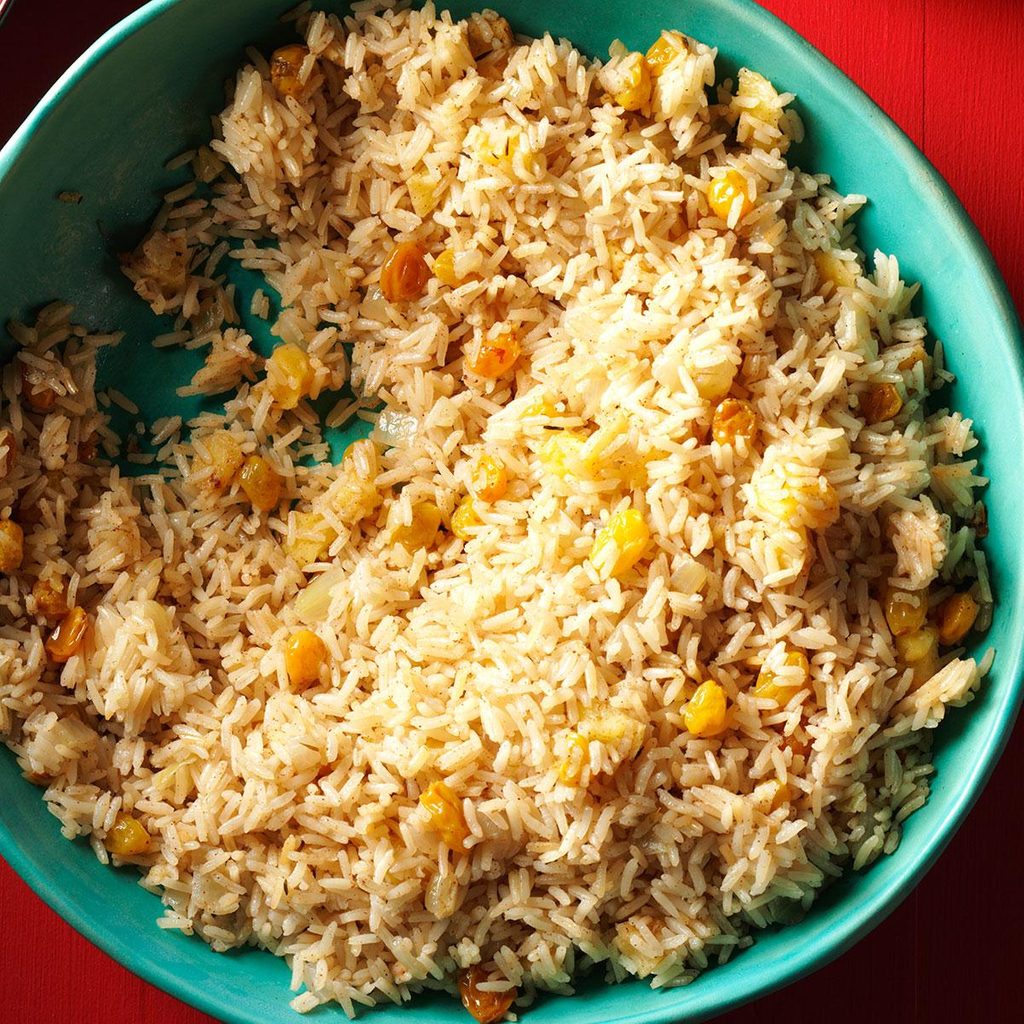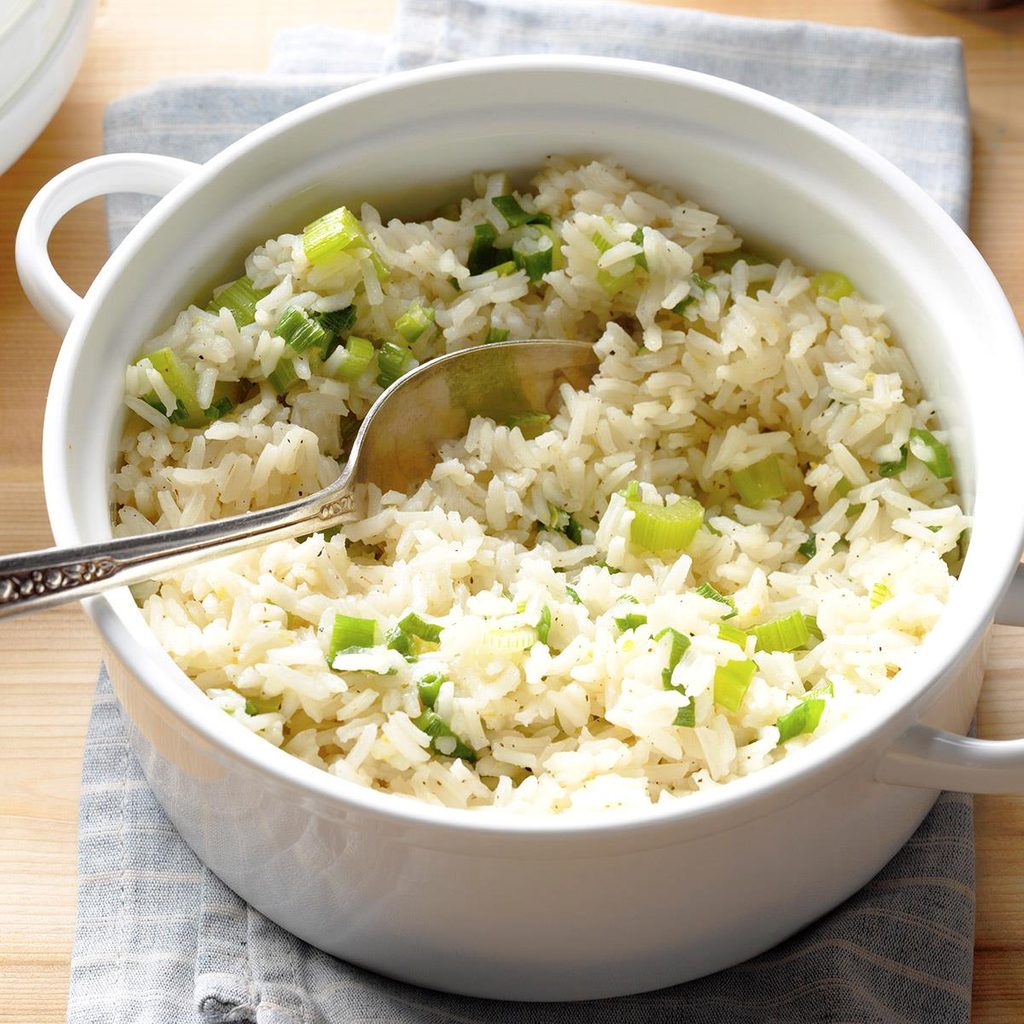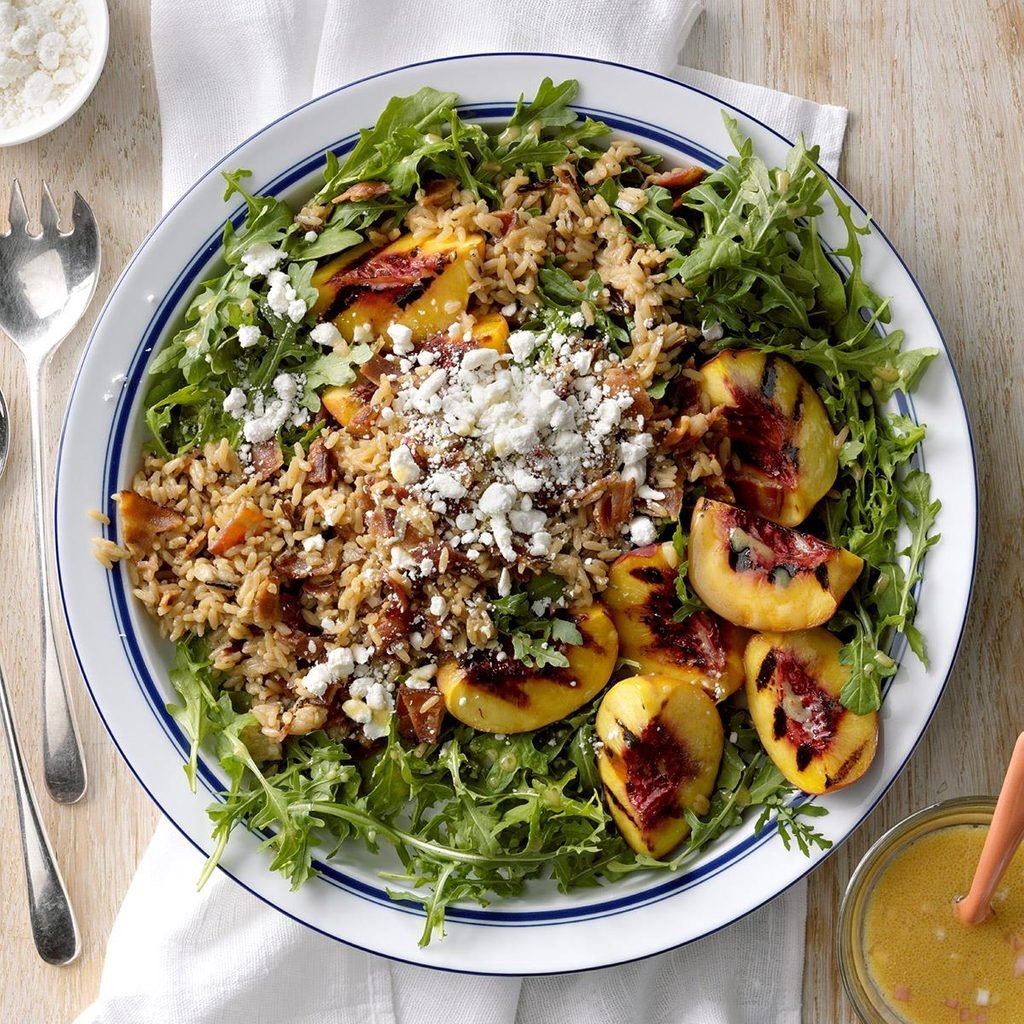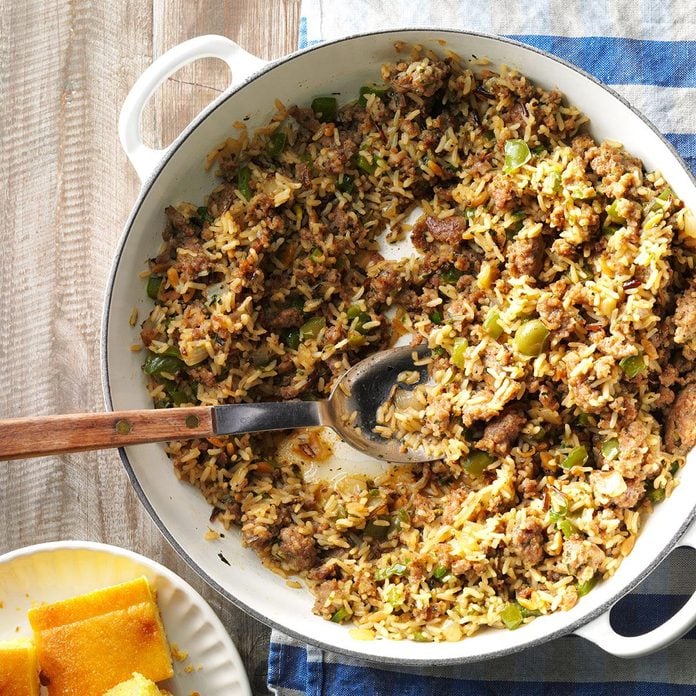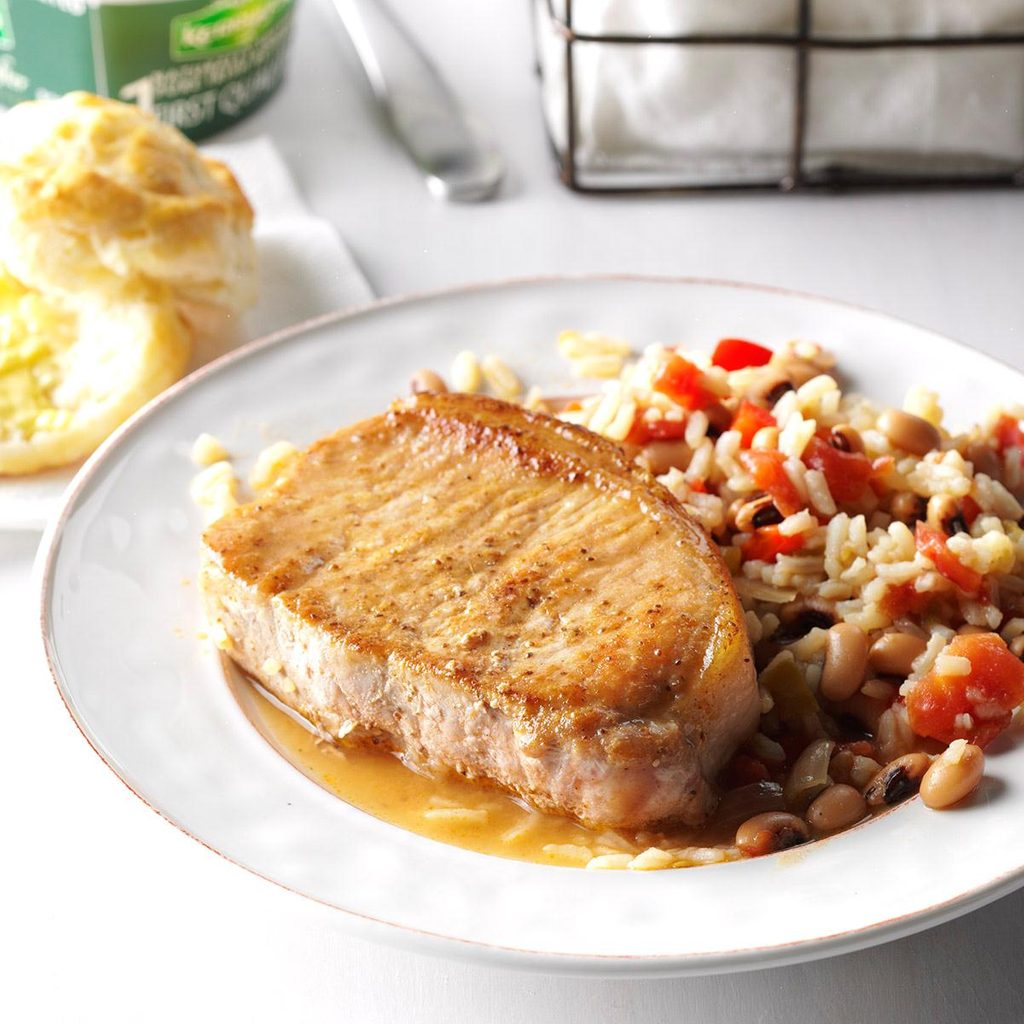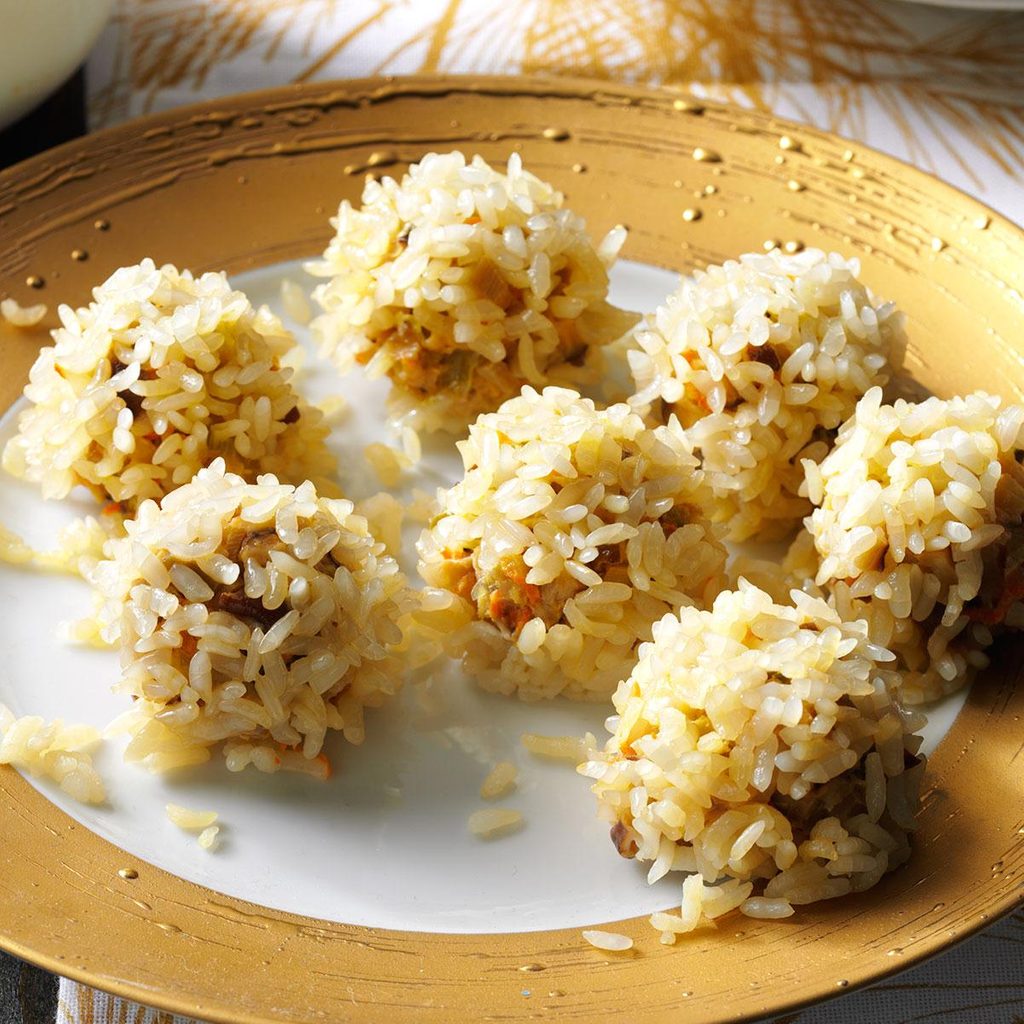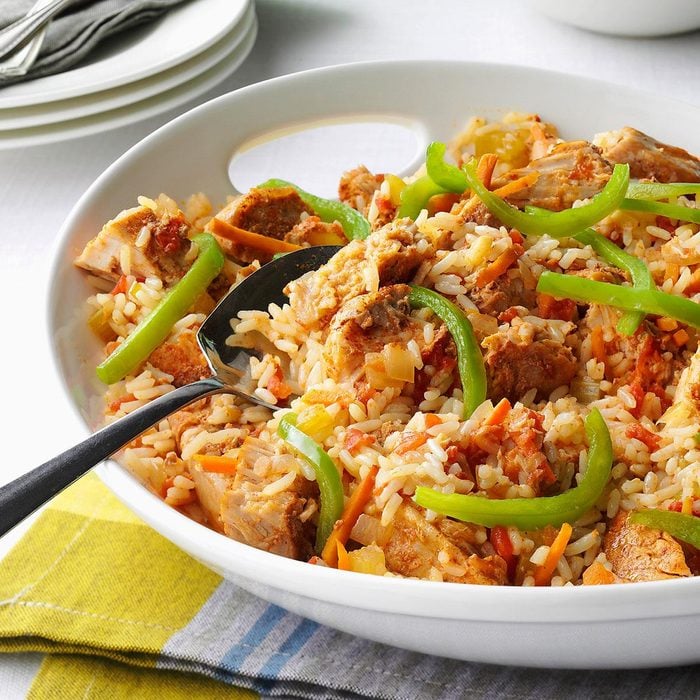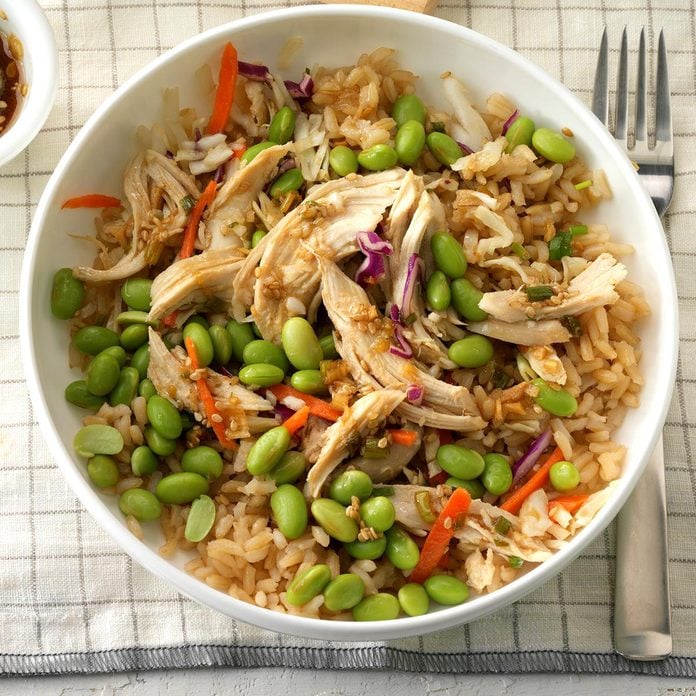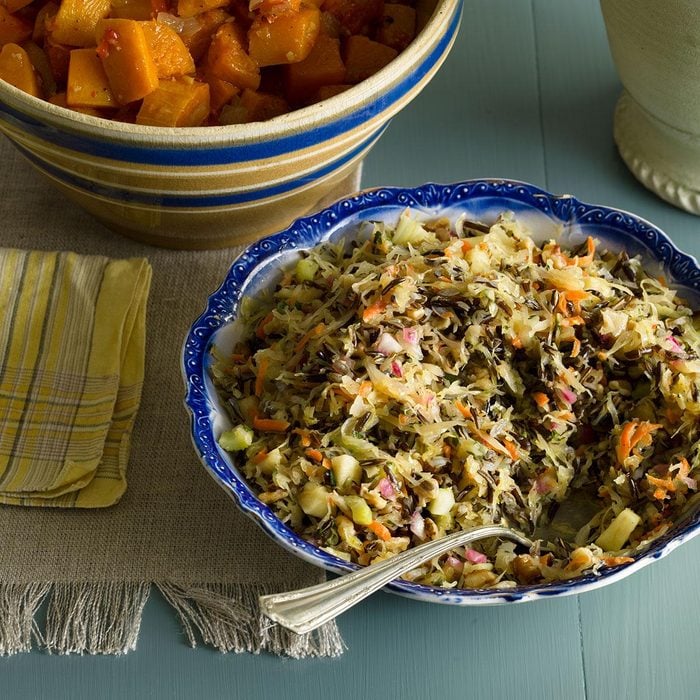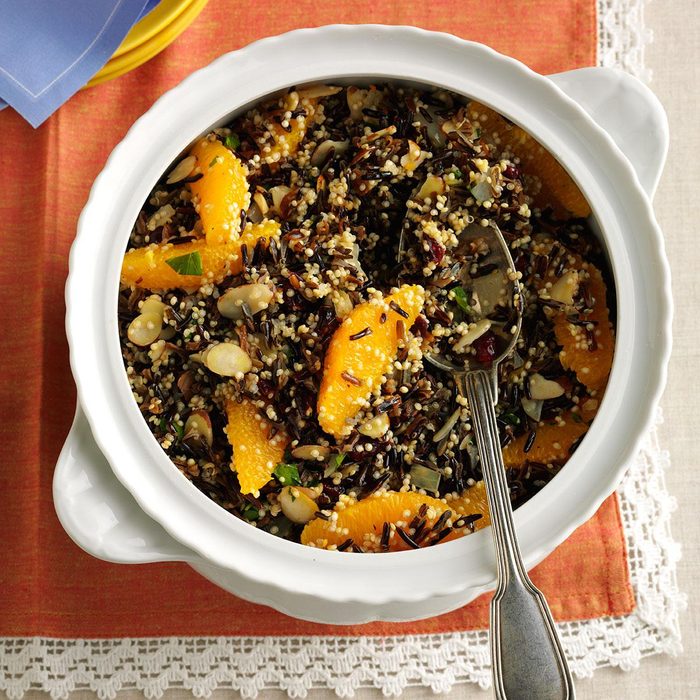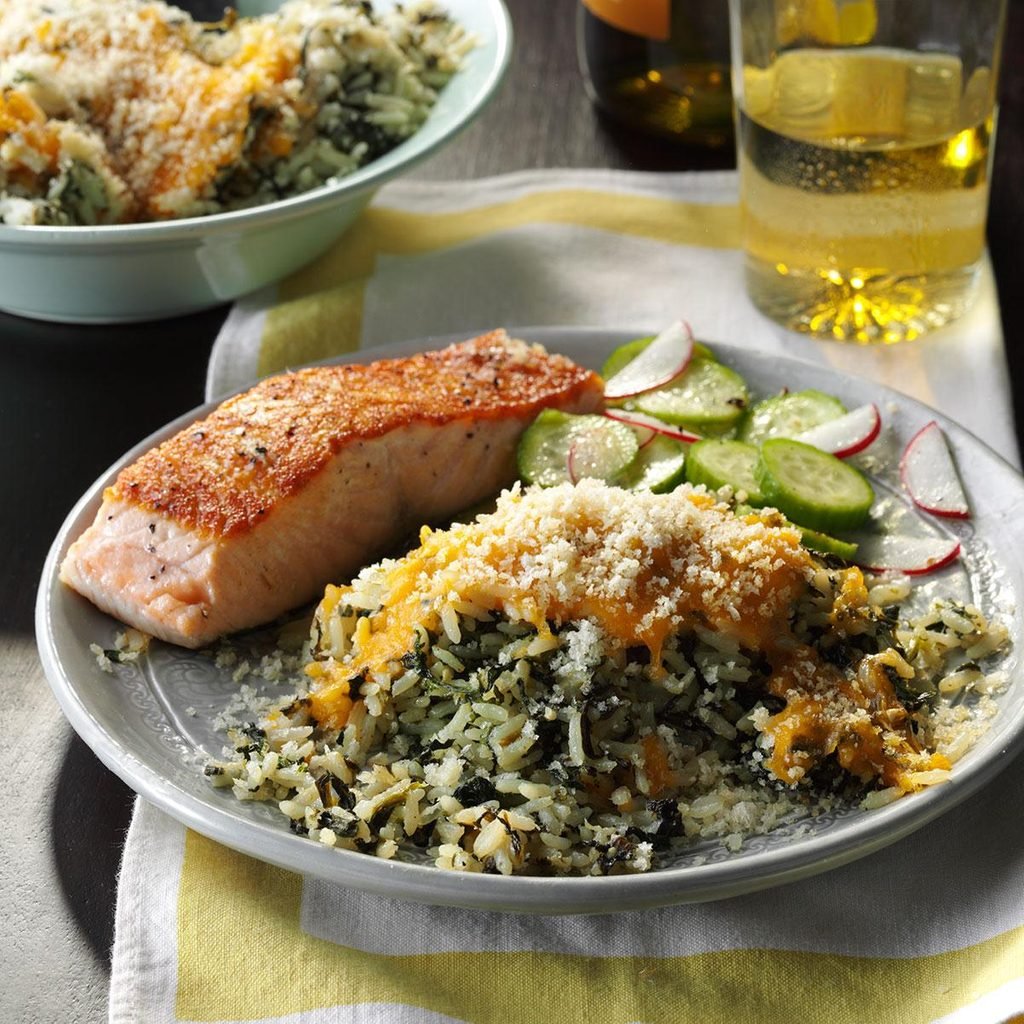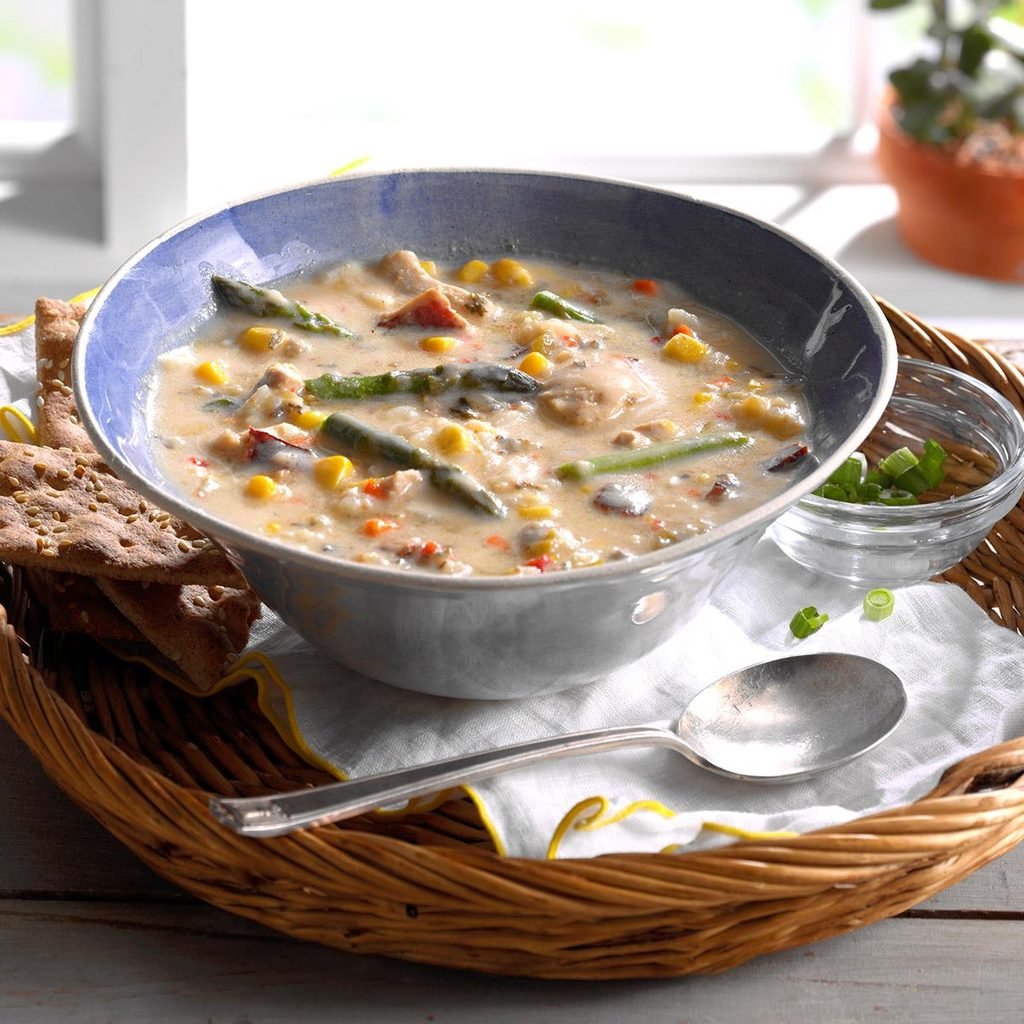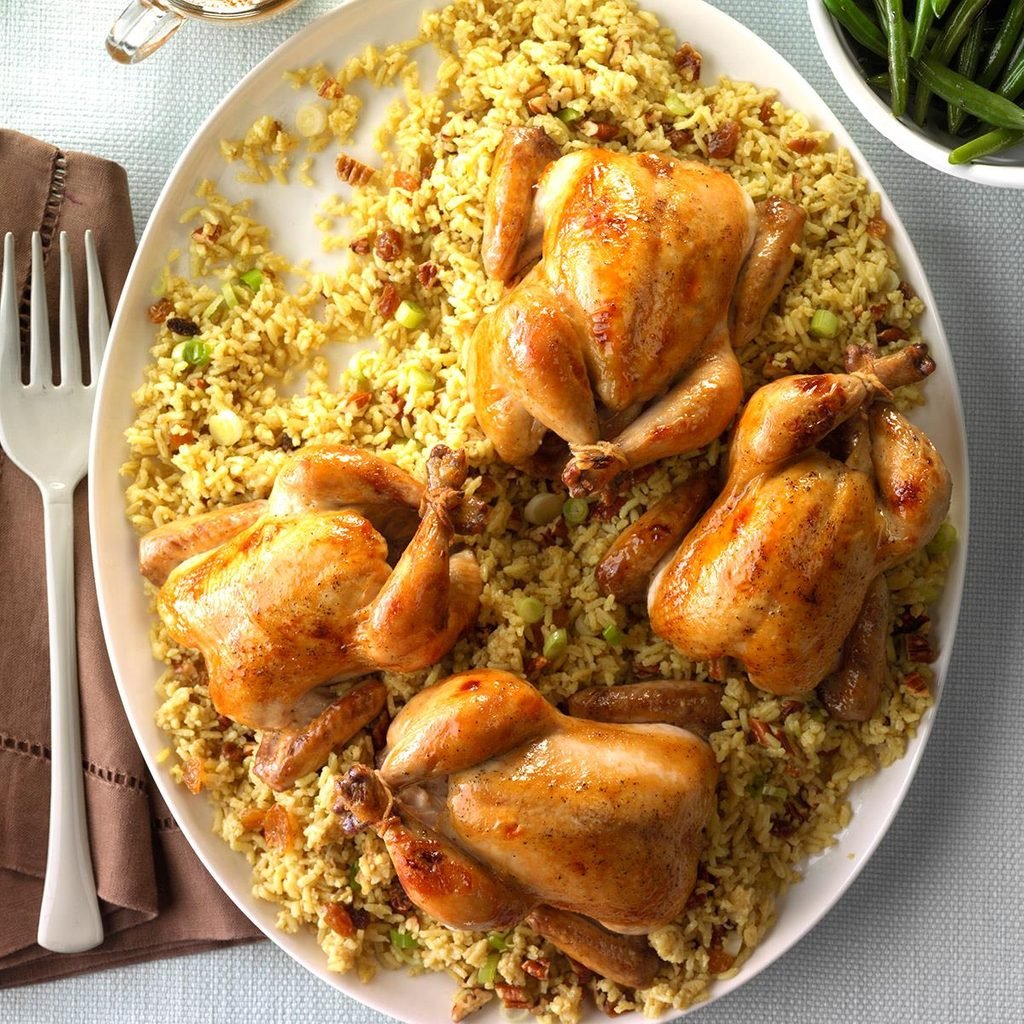Rice may seem like a basic dish, but cooking it requires immense precision. To make perfectly fluffy rice, you need to use the correct cook time and rice-to-water ratio for the type and amount of rice you’re making.
But once you learn how to cook rice and get comfortable making several different varieties, you’ll be equipped to make dozens of rice recipes from cuisines around the globe. Here’s a guide to the different methods for making various types of rice.
How to Cook Rice on the Stove
This basic white rice recipe makes about 3 cups of cooked rice, which will serve four people. However, you can adjust the rice-to-water ratio if you’d like to make more or less. You may also have to adjust the ratios if you’re cooking a different type of rice—refer to our rice-to-water ratio chart below.
Ingredients
- 2 cups water
- 1 tablespoon butter (optional)
- 1/4 teaspoon salt (optional)
- 1 cup white rice
Directions
Step 1: Boil the ingredients
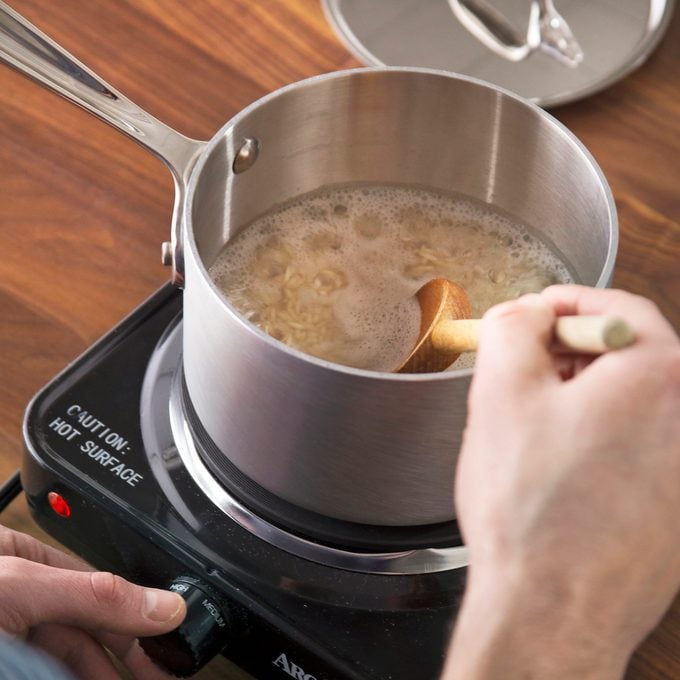 Taste of Home
Taste of Home
Bring the water—as well as the butter and salt, if you’re using them—to a boil in a large saucepan. Stir in the rice.
Test Kitchen tip: For more flavor, try using broth or coconut milk instead of water. You can also throw in seasonings like a bay leaf or your favorite spice blend.
Step 2: Add rice and simmer
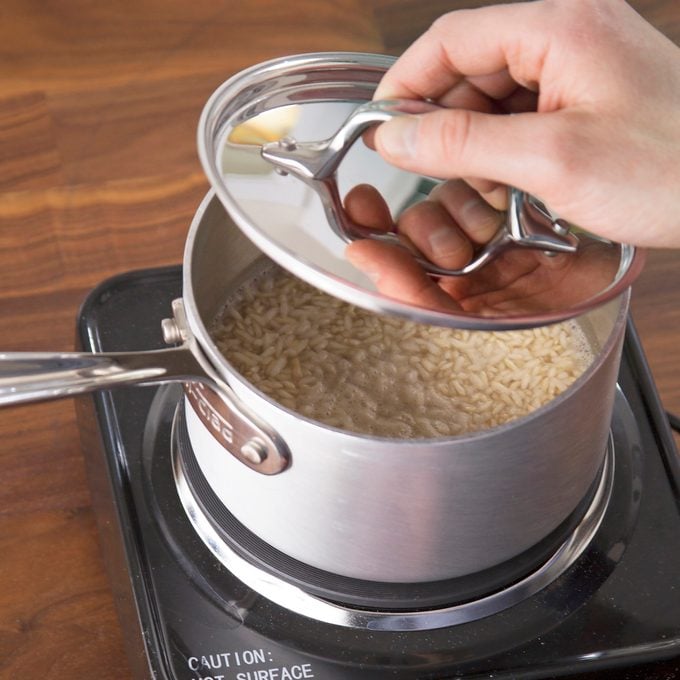 Taste of Home
Taste of Home
Once the rice and liquid reach a boil, cover the pan and reduce the heat to a simmer. Cook until the rice is tender, about 12 to 15 minutes.
Remove the pan from the heat and let it stand, covered, for a few minutes—this allows any excess water to get absorbed and prevents the rice from burning. Fluff with a fork or rice paddle before serving.
Test Kitchen tip: Resist the urge to lift the lid of the saucepan to check on your rice while it’s cooking—it interrupts the cooking process.
Other Rice Cooking Methods
How to Cook Rice in a Rice Cooker
Making rice in a rice cooker is a near-effortless way to consistently get perfectly cooked rice—and it frees up space on your stovetop for other dishes. (Here are some of the best rice cookers.)
To use a rice cooker, simply pour rinsed rice and water into the machine, cover it and press a button. The rice-to-water ratio for rice cookers is 1:1 in most cases, but follow the manufacturer’s directions for specifics about how much rice and water to use. Learn how to make coconut rice.
Test Kitchen tip: When using a rice cooker, rinse your rice many times before cooking—otherwise it will bubble and foam like crazy!
How to Cook Rice in the Microwave
We generally recommend sticking to the stovetop or rice cooker methods. In our culinary team’s experience, cooking rice in the microwave gets messy! (However, this Shrimp with Coconut Rice recipe uses a microwave method.)
If you do want to cook rice in your microwave, there are various microwave rice cookers available on the market, like this Progressive International Microwave Rice Cooker, which steams up to 6 cups of cooked rice. The cook time ranges from 10 to 30 minutes, depending on the type and amount of rice you’re making, as well as your microwave’s wattage.
Additionally, you can also use microwavable rice products like Uncle Ben’s Ready Rice or Success Boil-in-Bag precooked rice.
How to Cook Rice Like Pasta
In many cases, you shouldn’t boil rice in an unmeasured amount of water and then drain it, as you do with pasta. It’s typically essential to use the correct rice-to-water ratio when you’re making rice on the stove.
However, the boil-and-drain method works for brown rice. Boil brown rice for 25 to 30 minutes in salted water before straining it. Return it to the hot pot, cover it with a lid, and let it steam for 10 minutes before serving.
Additionally, some convenience food products like Success Boil-in-Bag rice are designed to be boiled and drained like pasta.
How to Make Rice Pilaf
Pilaf is a seasoned rice dish that typically involves cooking rice in stock or water with seasonings, and adding meat or vegetables. To make rice pilaf, you start by sauteeing the rice in oil before adding the liquid and other seasonings (similar to the way you do when making risotto).
If you’re interested in making pilaf, Cashew Rice Pilaf and Seasoned Brown Rice Pilaf are great recipes to start with.
How to Cook Different Types of Rice
While you can use the same basic methods to cook different types of rice, the preparation and rice-to-water ratios will be different. Here’s a guide for how to cook different types of rice.
How to Cook Long-Grain Rice
Long-grain rice is about four times as long as it is wide. It cooks up fluffy and the individual grains stay separated, especially if you rinse the rice before cooking.
White Rice
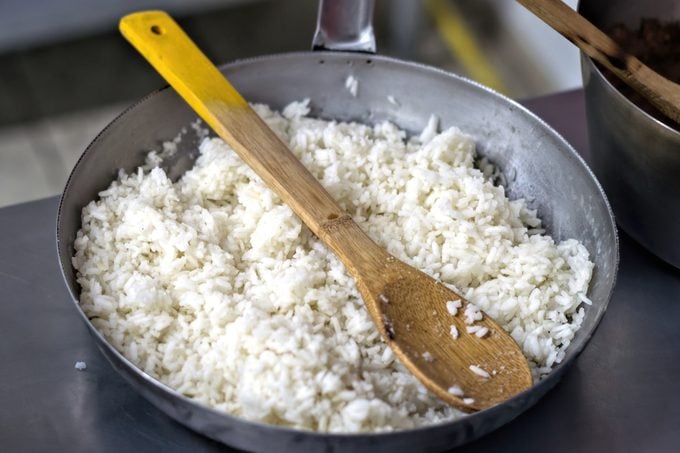 Simon McGill/Getty Images
Simon McGill/Getty Images
You can use long-grain white rice in almost any recipe, no matter the cuisine. It’s similar to brown rice but has the bran and germ removed. It cooks up super fluffy with separate, individual grains.
How to prepare: For best results, rinse the rice. However, you don’t need to wash it vigorously—you’re just removing the dusty outer starch layer.
The ratio: 2 cups water + 1 cup rice
Our favorite recipes: When it comes to white rice dishes, we love this Lemon Rice Pilaf.
Basmati Rice
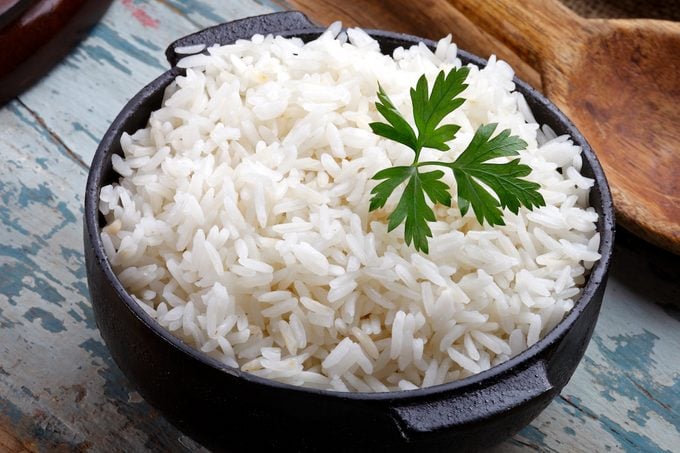 ribeirorocha/Getty Images
ribeirorocha/Getty Images
Basmati rice is a fragrant rice that’s grown in the foothills of India and Pakistan. After it’s harvested, it’s aged for a year to decrease moisture, giving it an incredible aroma and a full-bodied flavor.
How to prepare: Wash basmati rice multiple times, swirling it with your hands until the water gets cloudy. Continue draining and washing until the water runs clear. For extra-soft rice, soak the rinsed rice in clean water for 30 minutes before cooking.
The ratio: 1-1/2 cups water + 1 cup rice
Our favorite recipe: Chicken Tikka Masala
Jasmine Rice
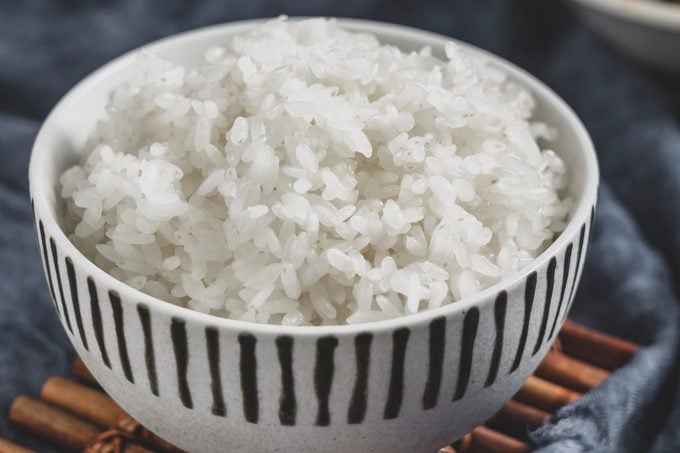 Ge JiaJun/Getty Images
Ge JiaJun/Getty Images
Just like the flower it’s named after, this sweet-smelling rice from Thailand has a buttery flavor. Unlike other long-grain rice, jasmine grains will stick together even if you wash it. It’s also notorious for sticking to the bottom of the pot, so let the pot sit for 5 to 10 minutes before stirring for the fluffiest, softest grains.
How to prepare: No rinsing required—just cook using the stovetop method and simmer for 12 to 15 minutes. (Here’s how to cook jasmine rice, step by step.)
The ratio: 2 cups water + 1 cup rice
Our favorite recipes: There are so many mouthwatering jasmine rice recipes, like this Pumpkin-Curry Chicken over Cashew Rice and a copycat version of Chipotle cilantro-lime rice.
Wild Rice
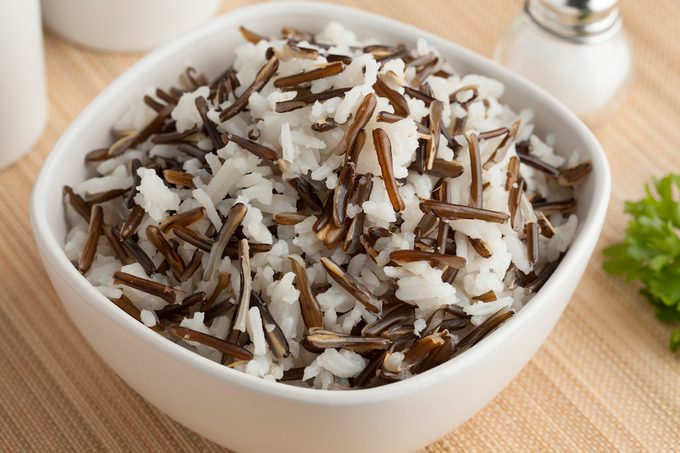 PicturePartners/Getty Images
PicturePartners/Getty Images
This “rice” isn’t actually rice at all—it’s a grass seed that has protein, a toasted, nutty flavor and an incredible texture. Wild rice takes longer to cook than other types of rice because it’s slow to absorb water. It may not absorb all of the cooking liquid before it becomes tender.
How to prepare: No rinsing necessary. Using the stovetop method, cook for 45 to 60 minutes and then drain any remaining liquid. (For more details, check out our guide to how to cook wild rice.)
The ratio: 3 cups water + 1 cup rice
Our favorite recipe: Cranberry Wild Rice Pilaf
How to Cook Medium-Grain Rice
Medium-grain rice is twice as long as it is wide, and the rice granules tend to stick together a bit. This results in chewy but tender, moist rice.
Brown Rice
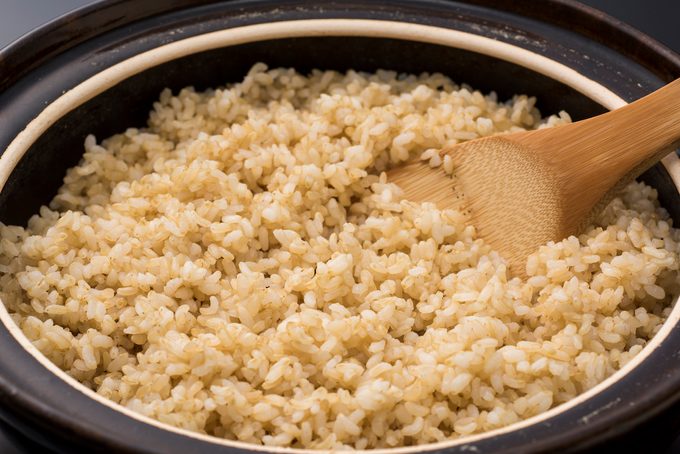 kuppa_rock/Getty Images
kuppa_rock/Getty Images
You can find brown rice in short-, medium- and long-grain varieties, but we prefer the latter two because they’re easier to cook. Brown rice has an outer bran layer, which makes it more nutritious than white rice but gives it a shorter shelf life. Here are a few tips for making your white rice taste better.
How to prepare: Rinsing generally isn’t necessary. Cook for 35 to 45 minutes using the stovetop method. (For more details, check out our guide to how to cook brown rice.)
The ratio: 2 cups water + 1 cup rice
Our favorite recipes: There are many brown rice recipes to choose from, but we’re big fans of this Arugula & Brown Rice Salad.
Arborio Rice
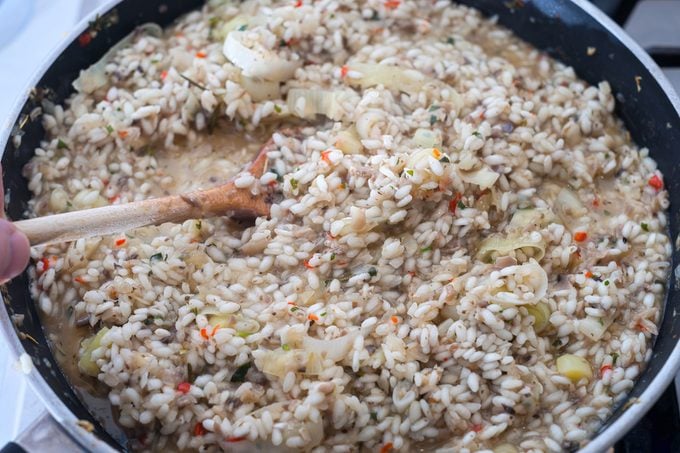 Boris SV/Getty Images
Boris SV/Getty Images
Arborio rice is a short- or medium-grain rice prized for its ability to absorb liquid slowly. The constant stirring and gradual addition of liquid creates a creamy consistency and a chewy bite. It’s most commonly prepared for risotto, but you can also use it in paella.
How to prepare: Don’t rinse arborio if you’re making risotto or another creamy dish. For the best risotto, toast the grains in the oil before adding the liquid one ladle at a time. Our Test Kitchen recommends tasting as you cook to determine doneness based on the rice’s texture.
The ratio: Approximately 3 cups liquid + 1 cup rice
Our favorite recipes: Some of our favorite arborio rice recipes include this Hearty Shrimp Risotto and arancini, or fried Italian risotto balls.
How to Cook Short-Grain Rice
Short-grain rice is plump, with grains that stick together and clump when you cook them.
Sushi Rice
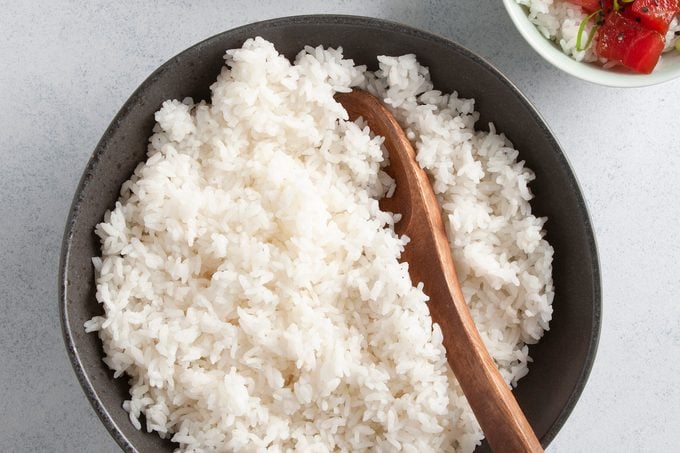 Taste of Home
Taste of Home
Sushi rice is a highly starchy rice that’s super sticky—just the thing you’ll need when making sushi! You can also eat it as table rice. For true sushi rice, mix in some rice vinegar, sugar and salt after it’s cooked. (Sticky rice is a somewhat similar rice variety.)
How to prepare: Wash sushi rice 3 to 5 times before cooking to remove excess starch. Cook using the stovetop method for 15 to 20 minutes. (Check out our guide to how to make sushi rice to learn how to make it using a rice cooker and a hangiri, a wooden vessel used to cool and mix the rice.)
The ratio: 2 cups water + 2 cups rice
Our favorite recipes: California Sushi Rolls and Onigiri (Rice Balls)
Rice-to-Water Ratio Chart
The general rice-to-water ratio is as easy to remember as 1, 2, 3: 1 cup rice + 2 cups water = 3 cups cooked rice. However, the actual ratio varies depending on the cooking method and the type of rice you’re using. The ratio is generally 1:1 if you’re using a rice cooker, but follow the manufacturer’s instructions.
Type of Rice
|
Water
(Cups)
|
Rice
(Cups)
|
Cook Time
(Minutes)
|
Yield
(Cups)
|
| White rice |
2 |
1 |
15-20 |
3 |
| Basmati rice |
1 ½ |
1 |
15-20 |
3 |
| Jasmine rice |
2 |
1 |
15-20 |
3 |
| Brown rice |
2 |
1 |
35-45 |
3 |
| Arborio rice |
3 |
1 |
To taste |
3 |
| Sushi rice |
2 |
2 |
15-20 |
4 |
| Wild rice |
3 |
1 |
45-60 |
3 |
What to Make with Rice
A key ingredient in many cuisines, rice is extremely versatile. Here are some ideas for how to incorporate rice into your cooking.
- A simple side dish: These healthy rice recipes are the perfect accompaniment to a weeknight meal.
- Fried rice: Once you learn how to make fried rice, you can make a meal out of whatever leftover vegetables and proteins are hanging out in your fridge. For fried rice with a crisp texture, use cold, leftover rice. There are many different fried rice recipes, including Kimchi Fried Rice.
- Rice bowls: From poke bowls to burrito bowls, rice is the foundation of these easy one-dish meals.
- Rice pudding: You might think of rice as a savory side, but you can use it to make desserts, too! Try this Rose Water Rice Pudding.
For a low-carb alternative to rice, make cauliflower rice using finely grated cauliflower.
Tips for Making Rice
Should you rinse rice before cooking?
Our Test Kitchen says the question of whether to rinse comes down to personal preference, the type of dish you’re making and the cooking method you’re using. Most rice is typically clean and free of debris, so rinsing often isn’t necessary.
In general, rinsing leads to rice that has separate grains and doesn’t clump, while rice that isn’t rinsed is more starchy and can be mushy. (Find out how to fix mushy rice!) Therefore, always rinse rice if you’re using a rice cooker. Don’t rinse rice if you’re making creamy rice dishes like risotto or rice pudding.
How much rice do you cook per person?
As a rule of thumb, plan on 1/4 cup of uncooked rice per person, which will make about 3/4 cup of cooked rice per person. However, it never hurts to have extra rice—you can turn it into fried rice or even freeze it for later—so don’t hesitate to make more than that. (Here’s how to freeze leftover rice.)
What is the best way to cook rice?
The best way to cook rice is on the stove or in a rice cooker, depending on your personal preference. Many members of our Test Kitchen love using a rice cooker because it’s easy and frees up room on your stove for other dishes. Several of our experts swear by this inexpensive Aroma rice cooker. However, other members of our Test Kitchen prefer to keep things simple and stick with the stovetop method.
Do you cook rice on high or low heat?
When you’re cooking rice on the stove, bring the liquid to a boil first before reducing the heat and simmering. If the heat is too high, you could scorch the bottom layer of rice. (Here are other rice mistakes to avoid.)
How long does it take to cook rice?
The amount of time it takes to cook rice depends on the type of rice you’re making and the method you’re using. In general, white rice cooks faster than brown and wild rice. Our rice-to-water ratio chart can help you determine how long it will take to cook your rice.
More Rice Recipes to Try
 TMB studio
TMB studio
I was talking about stuffed peppers with the other cooks at the restaurant where I work. We decided to mix similar ingredients for a soup. Customer response was overwhelming! —Krista Muddiman, Meadville, Pennsylvania
Go to Recipe
Southwestern RiceI created this colorful side dish after eating something similar at a restaurant. It complements any Tex-Mex meal wonderfully. Sometimes I add cubes of grilled chicken breast to the rice to make it a meal in itself. —Michelle Dennis, Clarks Hill, Indiana
Lemon Chicken and RiceOn our busy ranch, we often need meals we can put on the table in a hurry. This all-in-one chicken dish - with its delicate lemon flavor - fits the bill and it's inexpensive to boot. —Kat Thompson, Prineville, Oregon
Texas-Style Spanish RiceThe original version of this recipe was given to me by a Mexican friend, but I've modified the spices to suit my family's tastes. It's become a favorite at our house—see if it doesn't do the same at yours! —Melissa Pride, Plano, Texas
Herbed Rice PilafThis savory side dish has been a family favorite for years. Our daughter Jennifer became an expert at this recipe at age 12, which was a huge help for a busy working mom like me. We really enjoy this rice dish in the summer with a grilled entree. —Jeri Dobrowski, Beach, North Dakota
Forgotten JambalayaDuring chilly times of the year, I fix this jambalaya at least once a month. It’s so easy—just chop the vegetables, dump everything in the slow cooker and forget it! Even my sons, who are picky about spicy things, like this dish. —Cindi Coss, Coppell, Texas
Black Bean Chicken with RiceThis spicy family favorite calls for just a few basic ingredients, including chicken, black beans and rice, so it’s quick and easy to stir up in your skillet on a weeknight. —Molly Newman, Portland, Oregon
Korean Beef and RiceA friend raved about Korean bulgogi, which is beef cooked in soy sauce and ginger, so I tried it. It's delicious! You'll dazzle the table with this tasty version of Korean beef and rice. —Elizabeth King, Duluth, Minnesota
Rice-Stuffed PeppersMother used to fix this wonderful, easy dish when we had company. She was from a family of fantastic Cajun cooks, so our food was always well-seasoned. In Louisiana, rice is part of many meals. The cheese sauce sets these stuffed peppers apart from any others I've tried. —Lisa Easley, Longview, Texas
Wild Rice SoupAs the oldest of eight girls growing up on the farm, I began cooking at an early age! This soup—which I first had at my sister's house—brings me compliments no matter where I serve it. —Elienore Myhre, Balaton, Minnesota
Makeover Shrimp Rice CasseroleThe cooks at Taste of Home made a lightened-up version of my shrimp casserole, and I love it. The makeover has only half the calories and sodium of my original recipe, and less fat, too. —Marie Roberts, Lake Charles, Louisiana
Black Bean and Rice EnchiladasI love Mexican food, but I'm always looking for ways to make it more healthy. I reworked a dish that I have enjoyed in restaurants to suit my taste and lifestyle. —Christie Ladd, Mechanicsburg, Pennsylvania
Tilapia with Jasmine RiceThis tender, full-flavored tilapia with fragrant jasmine rice is absolutely to die for. Your family will love this healthy and delicious dish! —Shirl Parsons, Cape Carteret, North Carolina
Lemon Chicken & Rice SoupYears ago, I fell hard for a lemony Greek soup at Panera Bread. It was just a special back then, but I re-created it at home so we could eat it whenever a craving hit! —Kristin Cherry, Bothell, Washington
Spicy Chicken and RiceAs a working mom with two kids, I have little time to prepare something hearty during the week. This recipe is easily tossed together in the morning and fabulous to come home to at night. Both of my picky eaters love it! —Jessica Costello, Westminster, Massachusetts
Corn, Rice & Bean BurritosNo one will miss the meat when you dish up these satisfying burritos bursting with a fresh-tasting filling. They’re fast to fix and won’t put a dent in your wallet. —Sharon W. Bickett, Chester, South Carolina
Contest-Winning Chicken Wild Rice CasseroleWhile this special chicken and wild rice casserole is perfect for a company dinner, it's so good that I often make it for everyday family meals. We think it is very nice served with some crusty rolls or French bread. —Elizabeth Tokariuk, Lethbridge, Alberta
Cranberry Chicken and Wild RiceTender chicken is baked in a sweet-tart cranberry sauce for this elegant entree. This chicken is delicious, and it’s so easy to prepare and I love that I can do other things while it bakes. —Evelyn Lewis, Independence, Missouri
Mexican Rice with ChickenThis skillet supper comes together with leftover cooked chicken and a packaged mix. After I prepared this rice, I served the extras on tortillas with cheese and sour cream the next day. Both meals were a hit. —Debra Rzodkiewicz, Erie, Pennsylvania
Lemony Turkey Rice SoupWhile growing up in Texas, I spent a lot of time helping my grandma cook. Lemon and cilantro add a deliciously different twist to turkey soup.
—Margarita Cuellar, East Chicago, Indiana
Spanish Rice with Ground BeefI don't know the origin of this recipe, but it's been in my family for a long time. I can remember eating it often as a little girl.—Beverly Austin, Fulton, Missouri
Turkey a la King with RiceI like to make this dish with our leftover turkey. It's a nice change from casseroles and so simple. Serve over rice, noodles, biscuits or toast. —Pat Lemke, Brandon, Wisconsin
Easy Chicken Fried RiceAfter my first child was born, I needed meals that were satisfying and fast. This easy chicken fried rice is now part of our regular dinner rotation. — Alicia Gower, Auburn, New York
Sirloin Strips over RiceI found this recipe in a movie magazine some 20 years ago. It was the favorite of some male star, but I don’t remember which one. Its great flavor and the fact that leftovers just get better have made it a family favorite! —Karen Dunn, Kansas City, Missouri
Peachy Pork with RicePeach preserves sweeten the spicy salsa in this delicious dish that’s nice enough for company. Adjust the heat level to taste by using mild or spicy salsa and seasoning. —Melissa Molaison, Hawkinsville, Georgia
Quick Bean and Rice BurritosThese hearty and zippy burritos can be whipped up in a jiffy. —Kimberly Hardison, Maitland, Florida
Salsa RiceIt's a snap to change the spice level in this popular rice side dish by choosing a milder or hotter salsa. It's a delicious way to round out burritos or tacos when the clock is ticking. —Molly Ingle, Canton, North Carolina
Chicken & Wild Rice StrudelsI wanted the buttery crunch of layered pastry without the sweet filling of strudel. Using rotisserie chicken from the store, I found my savory answer. —Johnna Johnson, Scottsdale, Arizona
Cumin Rice with AvocadoCumin, picante sauce and avocado do a terrific job of perking up rice in this any-day side dish. —Margaret Allen, Abingdon, Virginia
Shrimp Fried RiceThis delectable shrimp fried rice is filled with color and taste that makes it vanish fast. Our family of four can't get enough of it. Bacon adds crispness and a hint of heartiness. Consider it when you need a different main dish or brunch item. —Sandra Thompson, White Hall, Arkansas
Apple-Balsamic Pork Chops & RiceThanks to tangy balsamic vinegar and sweet apples, this one-pot pork chop lets you have a little something special anytime. —Greg Hageli, Elmhurst, Illinois
Beef & Rice Stuffed Cabbage RollsThis recipe is special to me because it’s an easy one-pot meal that tastes like you spent the whole day in the kitchen. My family loves it. —Lynn Bowen, Geraldine, Alabama
Chicken Rice SkilletPleasant seasonings and plenty of vegetables highlight this traditional chicken and rice pairing. Leftovers are great reheated in the microwave. —Jan Balata, Kilkenny, Minnesota
Mushroom Wild RiceThis is one of my favorite recipes from my mother. With only seven ingredients, it's quick to assemble in the morning before I leave for work. By the time I get home, mouthwatering aromas have filled the house. —Bob Malchow, Monon, Indiana
Gulf Coast Jambalaya RiceAs the stew of the South, jambalaya is a definite staple. For ages, home cooks have been making their own tweaks on the traditional recipe. This rendition is my favorite. —Judy Batson, Tampa, Florida
Skillet Ham & RiceHam, rice and mushrooms make a tasty combination in this homey stovetop dish. It goes from start to finish in just 25 minutes. —Susan Zivec, Regina, Saskatchewan
Wild Rice StuffingSince trying this stuffing recipe from my sister, I haven't made any other kind. It's so moist and tasty. When a big bowlful starts circulating around the table, happy holiday smiles get even bigger! —Connie Olson, Green River, Wyoming
Brown Rice Stuffed PeppersFor extra flavor, I sometime add beef bouillon to the dish while the peppers bake. It also steams them a little. If also make these with ground chicken or turkey; then I'll use chicken bouillon instead. —Hope Huggins, Santa Cruz, California
Quick Chicken & Wild Rice SoupMy mother-in-law raves about the chicken and rice soup we serve at our house. I tweaked the recipe several times to get it just right. —Teresa Jacobson, St. Johns, Florida
North African Chicken and RiceI'm always looking to try recipes from different cultures, and this one is a huge favorite. We love the spice combinations. This cooks equally well in a slow cooker or a pressure cooker. —Courtney Stultz, Weir, Kansas
Wild Rice Stuffed SquashI made this recipe when we invited both our families to celebrate our first Thanksgiving in our new home. There were 37 of us, and those who tried this dish raved about it. —Robin Thompson, Roseville, California
Curry Chicken and RiceI updated this chicken and rice dish by adding veggies and cashews to give it fresh and crunchy appeal. The green chiles in the tomatoes give it just the right little kick, but if you really like spice, add fresh, diced jalapeño. —Denise Klibert, Shreveport, Louisiana
Mushrooms & Peas Rice PilafAnything can be in a rice pilaf. Adding peas and baby portobello mushrooms gives it a springlike burst of color and a variety of textures. —Stacy Mullens, Gresham, Oregon
Lemony Chicken & RiceI couldn’t say who loves this recipe best, because it gets raves every time I serve it! Occasionally I even get a phone call or email from a friend requesting the recipe, and it's certainly a favorite for my grown children and 15 grandchildren. —Maryalice Wood, Langley, British Columbia
Broccoli, Rice and Sausage DinnerThe first recipe my kids requested when they left home was broccoli with sausage and rice. If fresh zucchini or summer squash is available, add it to the mix. —JoAnn Parmentier, Branch, Michigan
Turkey Curry with RiceWhen I have leftover turkey and a hankering for non-holiday food, I make turkey curry with carrots, cauliflower and mango chutney to spoon over rice. —Nancy Heishman, Las Vegas, Nevada
Shrimp & Broccoli Brown Rice PaellaYears ago my husband and I were vacationing in France and came across an open market where a man from Spain was making paella in a skillet; we've been hooked ever since. I love to whip this up for a large group, but if the gathering is small, I know I can easily freeze leftovers for another time. —Joni Hilton, Rocklin, California
Caribbean Shrimp & Rice BowlI had a similar rice bowl on vacation and re-created this lighter version at home. It takes me back to the islands every time I make it. Try grilling the shrimp for more beachy flavor. —Lauren Katz, Ashburn, Virginia
Broccoli-Chicken Rice SoupI transformed leftover chicken and rice into this tasty soup. It even passed the company test. —Karen Reed, Middletown, Ohio
Rice Pilaf with Apples & RaisinsI love making bulgar pilaf with apricots. So glad I tried it with dried apples and golden raisins! —Elizabeth Dumont, Madison, Mississippi
Lemon Rice PilafNo need to buy premade pilaf mix when you can easily make your own in 20 minutes. The lemon zest adds a welcome burst of tang. —Taste of Home Test Kitchen
RELATED: Find out how long does rice last in the fridge before going bad.
Grilled Peach, Rice & Arugula SaladThis hearty salad was created when I needed to clear out some leftovers from the fridge—and it became an instant hit! The grilled peaches are the ultimate "tastes like summer" salad booster. —Lauren Wyler, Dripping Springs, Texas
Spicy Rice CasseroleStirring up pork sausage, wild rice and jalapeno to taste makes this a terrific side. Or serve it with cornbread to turn it into a main dish. It’s easy to make ahead and reheat for a potluck meal. —Debbie Jones, California, Maryland
Southern Pork & RiceAt our house, we're big on healthy eating. These ultra tender chops with colorful rice and black-eyed peas are a meal fancy enough for a dinner party. —Annie Holmes, Murfreesboro, Tennessee
Pork & Rice MeatballsMy appetizer meatballs combine two of my favorite Asian dishes —Chinese pork dumplings and steamed chicken balls. —Elizabeth Dumont, Madison, MS
Cajun Pork and RiceI created this recipe after returning home from my travels and discovering I had little food in the house. I used ingredients that were already available in the refrigerator and pantry. —Allison Gapinski, Cary, North Carolina
Asian Chicken Rice BowlThis super flavorful, nutrient-packed dish makes use of supermarket conveniences like coleslaw mix and rotisserie chicken. This recipe is easily doubled or tripled for large families. —Christianna Gozzi, Asteria, New York
Northwoods Wild Rice SaladThis is my Minnesota version of a vintage German slaw that’s popular at church suppers. The wild rice has a nutty flavor that pairs perfectly with tangy sauerkraut. —Jeanne Holt, St. Paul, Minnesota
Wild Rice, Quinoa & Cranberry SaladThis fragrant salad is a vitamin and protein powerhouse. Toss in leftover cooked turkey to make it a meal the next day. —Jerilyn Korver, Bellflower, California
Festive RiceMy mom and I transformed plain rice by adding feta, cranberries, pumpkin seeds and cayenne. We wound up with a sweet and spicy crowd-pleaser. —Lisa de Perio, Dallas, Texas
Slow-Cooker Spinach & RiceI started making this in the slow cooker to save oven space during the holidays. It's so convenient that I no longer reserve it for special occasions! —Erica Polly, Sun Prairie, Wisconsin
Chicken & Vegetable Wild Rice SoupThis go-to weeknight recipe is one I tweaked over and over till it was just right. It has morphed from a labor-intensive wintry bowl to a steamy, comforting, slow-cooked favorite for our family. —Courtney Riggin, Hatchechubbee, Alabama
Glazed Cornish Hens with Pecan-Rice StuffingCornish hens bake up with a lovely golden brown shine when they are basted with my sweet and tangy glaze. The traditional rice stuffing has some added interest with crunchy pecans and sweet golden raisins.—Agnes Ward, Stratford, Ontario
